STORAGE and TRAILERS
umber of less well-known brands that continue to thrive in this sector; Avant, Multi One, Sherpa and Norcar, for example.
The Avant 225 can lift 350 kg to a height of 1.4m.
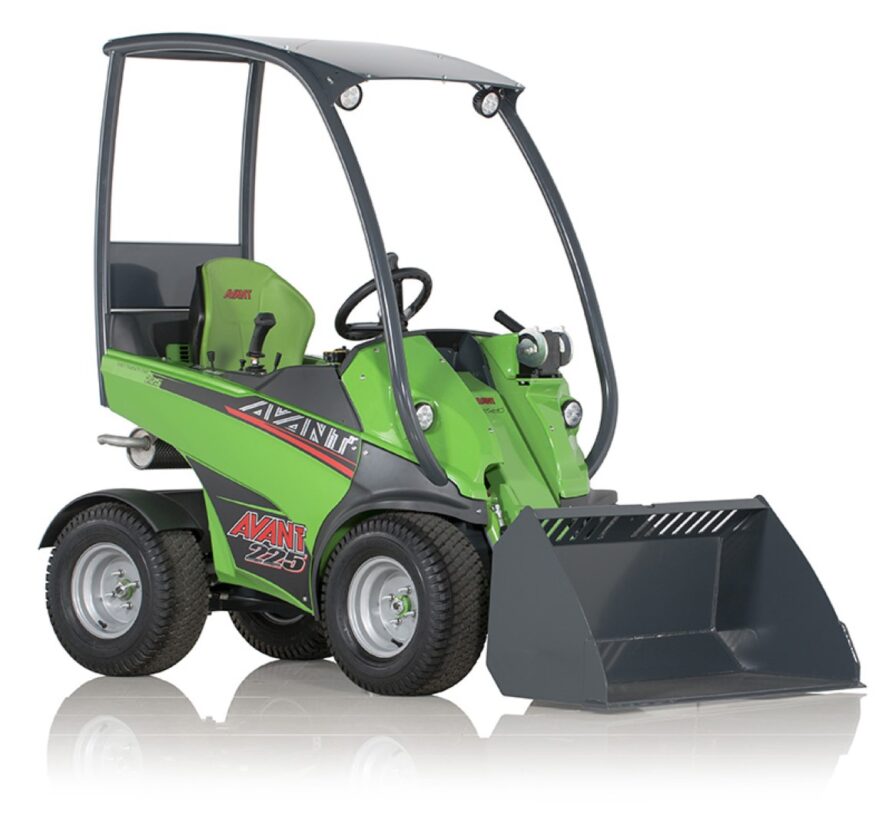
With a folding ROPS and no attachments fitted, within CDS limits.
It can be fitted with a wide range of attachments, brushes, excavators, pallet forks, snow clearance blades, augers, post drivers, and winches for example.
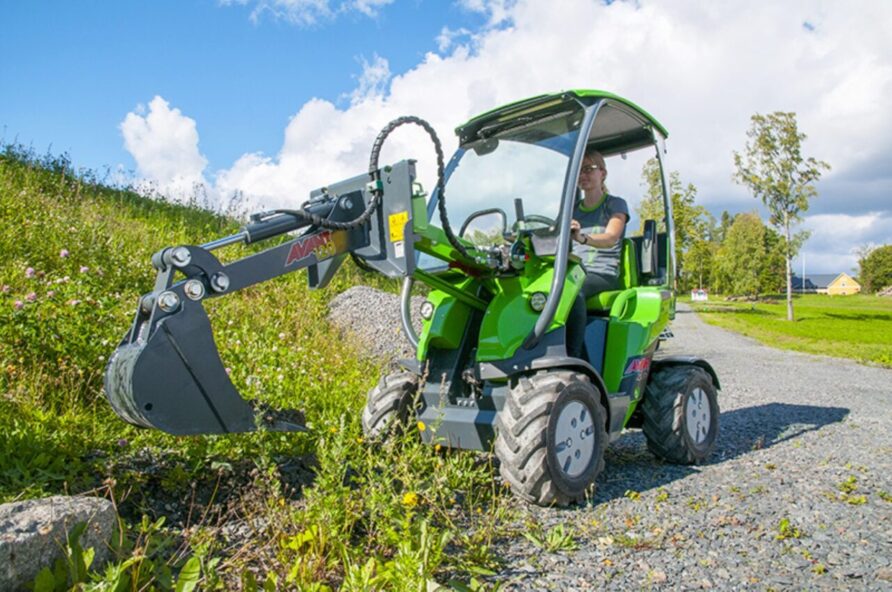
Stand on Loader
Most conventional skid steer or tracked loaders tend to be quite heavy, so the industry has responded by creating stand-on versions to reduce weight. Ditch Witch, Bobcat, Sherpa, Wacker Neuson, Kanga, and Vermeer, all have a range of models.
Most of these are still beyond CDS limits.
Because of the unique method by which it changes attachments, the Ditch Witch Zahn is an unusual machine in this regard, it fits.
Ditch Witch has a wide range of industrial strength attachments for the Zahn.
Other
Walk behind tandem vibratory rollers, plate compactors, dumpsters, and other portable construction plant are small and light enough for CDS, although they will, of course, not be as capable as larger models.
A couple of interesting products do stand out, the Brokk 70 demolition robot and 954 BBT Mini Transporter because they are both well realised and compact enough to fit inside a double CDS.
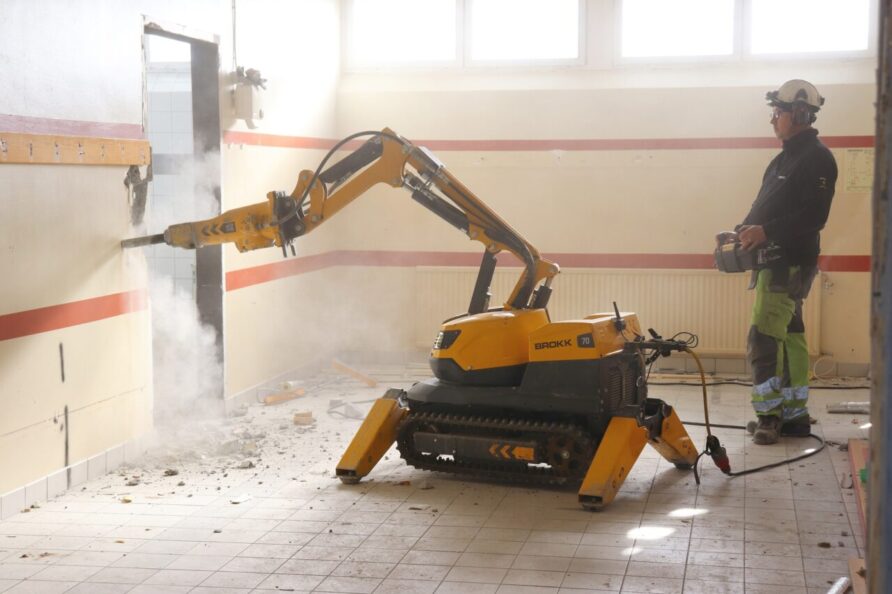
When stowed for transport, they are very compact, and a larger variant, the Brokk 11 would also fit.
There is a wide range of construction and demolition attachments available
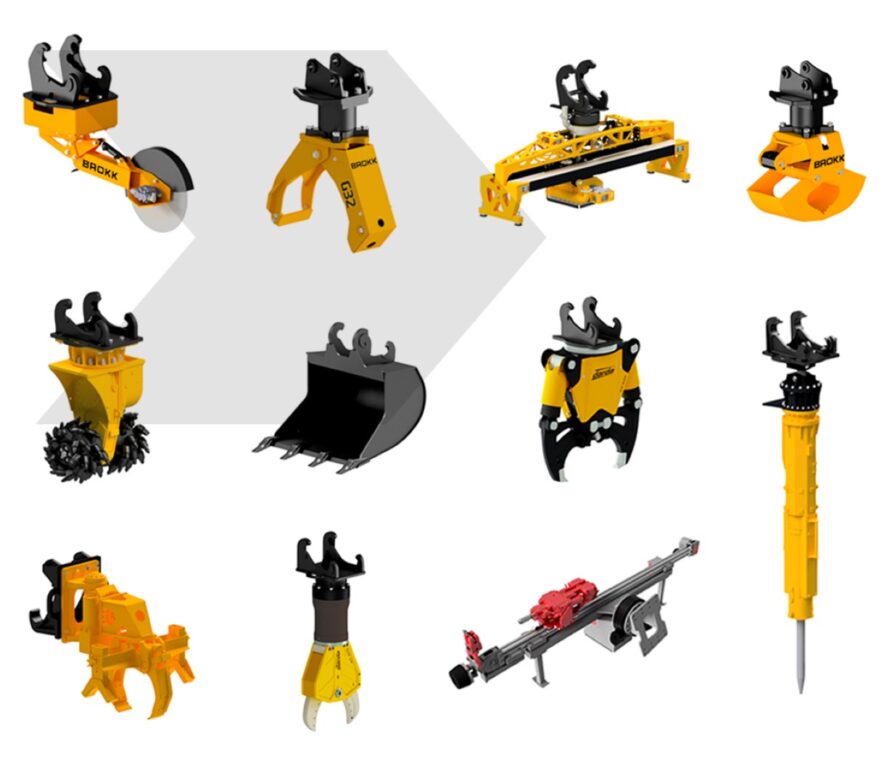
Brokk also has a defence and security division, but none of the platforms at this link would fit inside a double CDS.
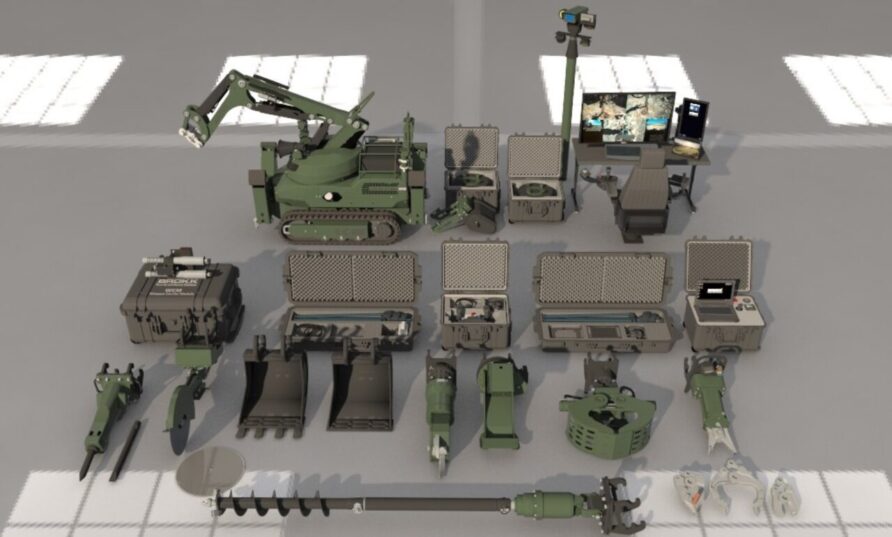
The BBT mini transporter starts with a single base unit.
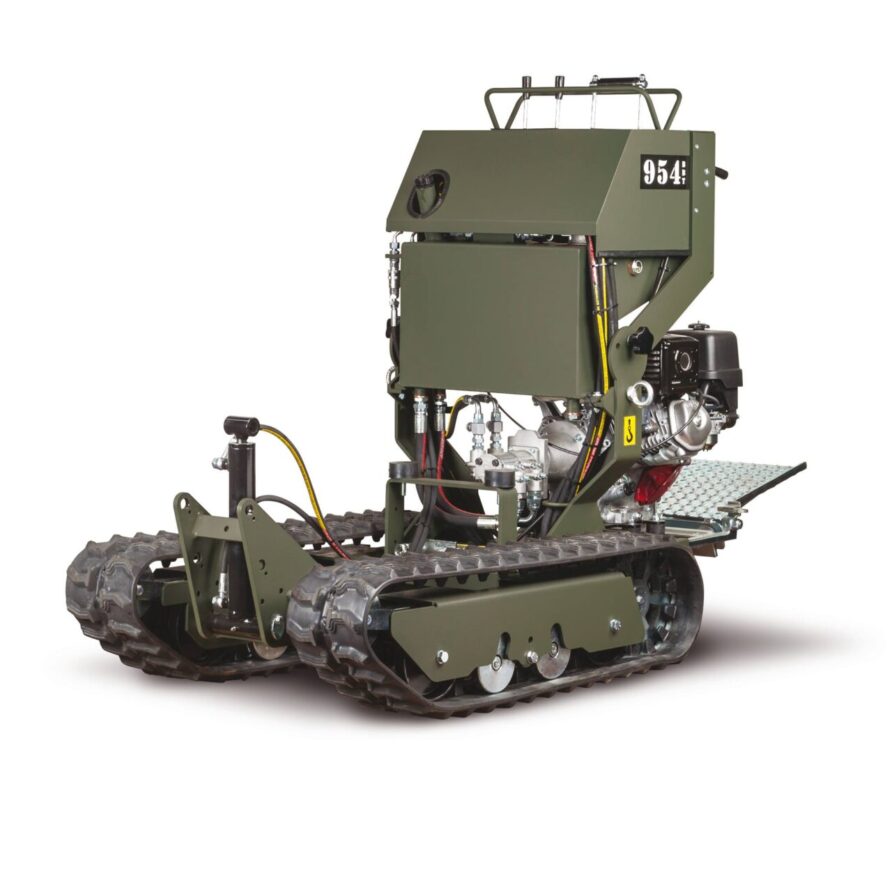
And then, similar to Boxer, can have several modules fitted to cover a range of different site tasks. Cranes, mixers, backhoe, dumpsters
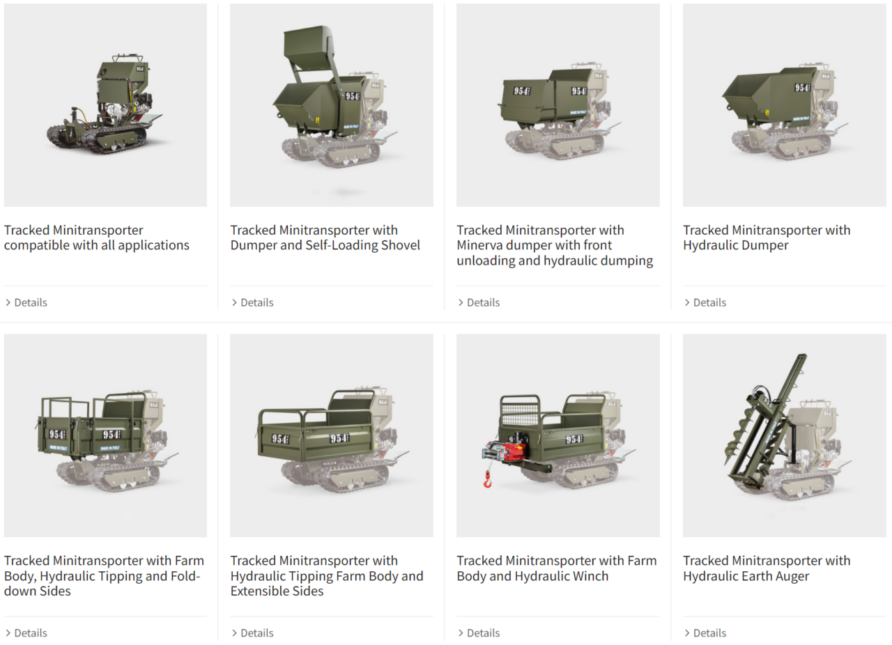
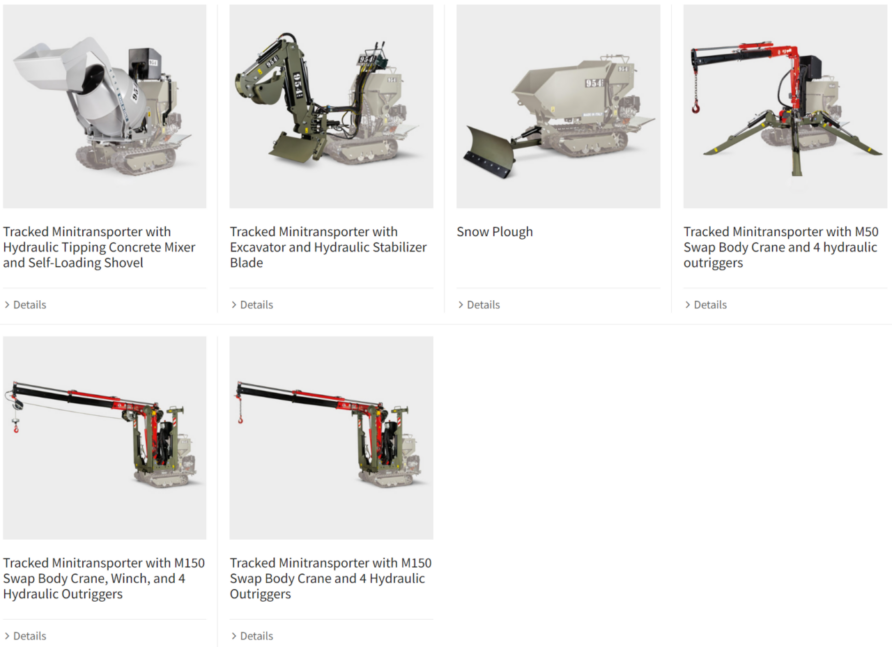
Weapons and Systems
Using door bundles, CDS and equipment carried on the person, parachute forces can make use of 81 mm mortars, hand-held HVM, Javelin ATGW, .50 Cal HMG, and 40 mm GMG.
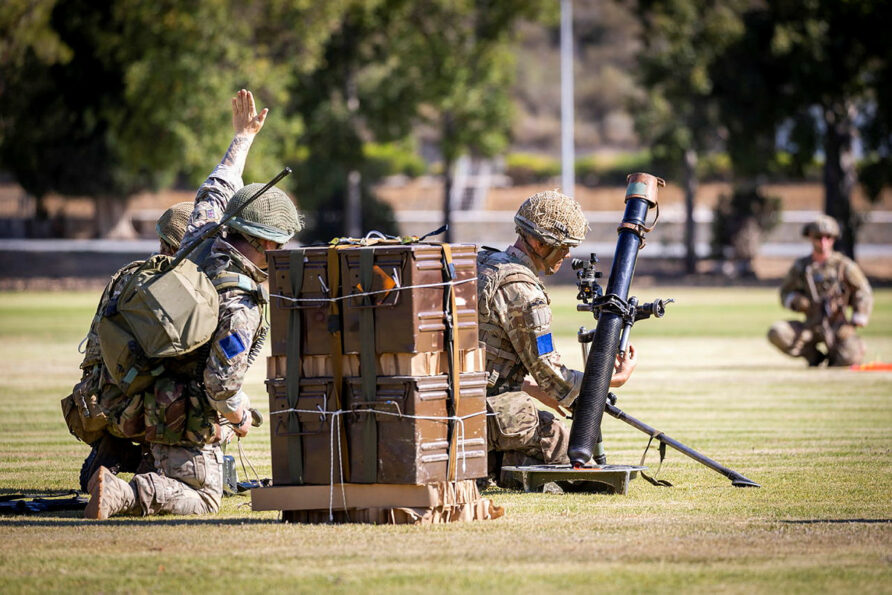
This is a not insignificant amount of violence, but still limited in range, endurance, and effects.
And no modern weapon system is light.
Without mobility support, there will always be limits to the amount of ammunition available and the distance parachute forces can influence beyond the landing site, no matter how supremely fit individual soldiers are.
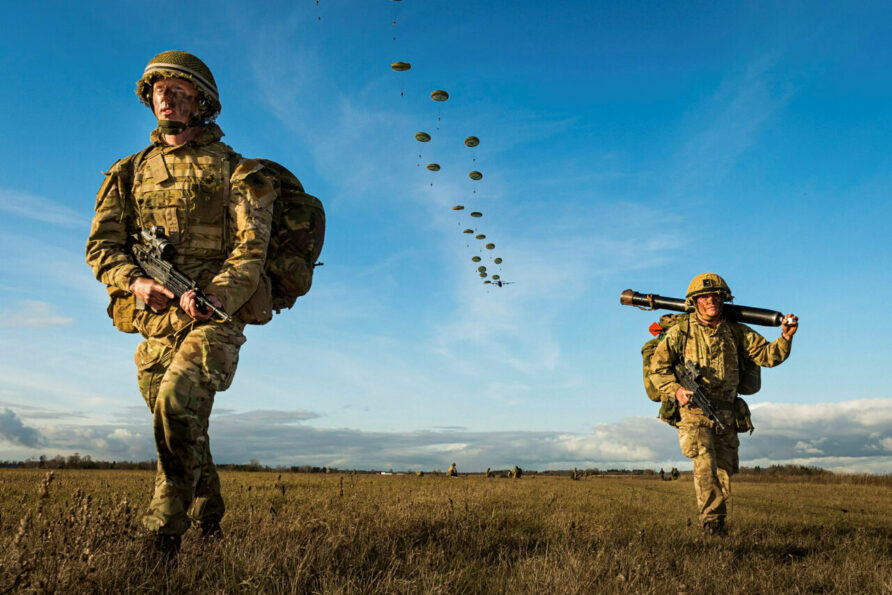
Expanding transport options achieves many things;
- Increases area over which the parachute force can exert influence
- Increases the amount of ammunition available for existing weapons like mortars and Javelin
- Increases scope for heavier weapons to be employed
- Increases scope for complementary systems to be employed, e.g. UAS, C-UAS, and loitering munitions
Artillery and Air Defence
The 105 mm Light Gun is far too large for CDS.
Although no longer in production, the Oto Melara 105mm Mod 56 Pack Howitzer, when broken down, would actually fit. There are thousands still in service, and some have even been gifted to Ukraine, but it seems unlikely we would go second-hand shopping.
Something more modern like the Mandus Hawkeye low recoil 105 mm weapon system still has too long a barrel and hasn’t been produced in a dismounted variant.
Perhaps there is a niche for Mandus, to recreate the pack howitzer concept, a short barrel low recoil weapon that could be easily broken down into multiple components for transport
If not, a larger mortar is probably the easiest option to improve firepower.
Whilst there are many vehicles with integrated 120 mm mortar options available, in this application, it probably makes more sense to simply use a conventional system with the trailer options above.
Systems from Expal, Hirtenberger, and Thales spring to mind, with up to 10 km range in some cases, about the same as the Pack Howitzer.

Keep it simple, like the 8 km range Expal 120-MX2-SM shown in the image below, but with a narrower trailer.
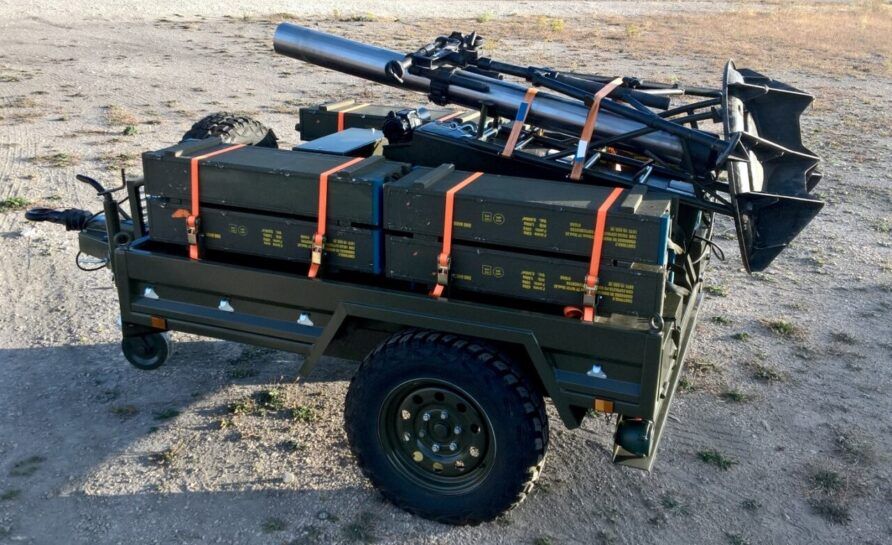
120 mm mortars have a large user base and an equally diverse manufacturing and development ecosystem.
Extended range and guided natures are available, the Elbit Iron Sting or example.
This would give a parachute landed force a significant capability improvement over 81 mm mortars, and still CDS compatible.
Other non-line-of-sight complex weapons that could be included in a double CDS package include EXACTOR and Ground Lunached Brimstone.
If EXACTOR remains in service, the existing launch trailer could potentially be re-engineered to fit inside a double CDS-compatible trailer, although the guidance and supporting equipment can be quite bulky.
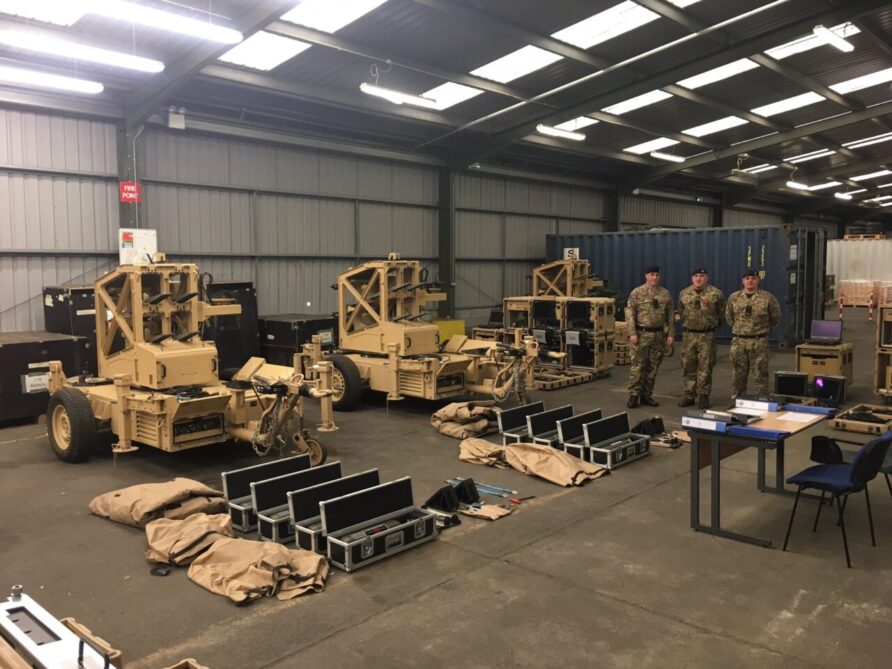
A precision with human-controlled terminal guidance out to a range of approximately 25km, useful for a parachute landed force?
With a shorter range, but lighter, and with flexible guidance, ground-launched Brimstone could provide the same parachute landed force with a powerful anti-armour blocking/ambush capability at greater ranges than Javelin and without the need to expose the firing point.
The Milrem Themis in the image below is too wide, long, and heavy for CDS, but the six Brimstone launcher box isn’t.
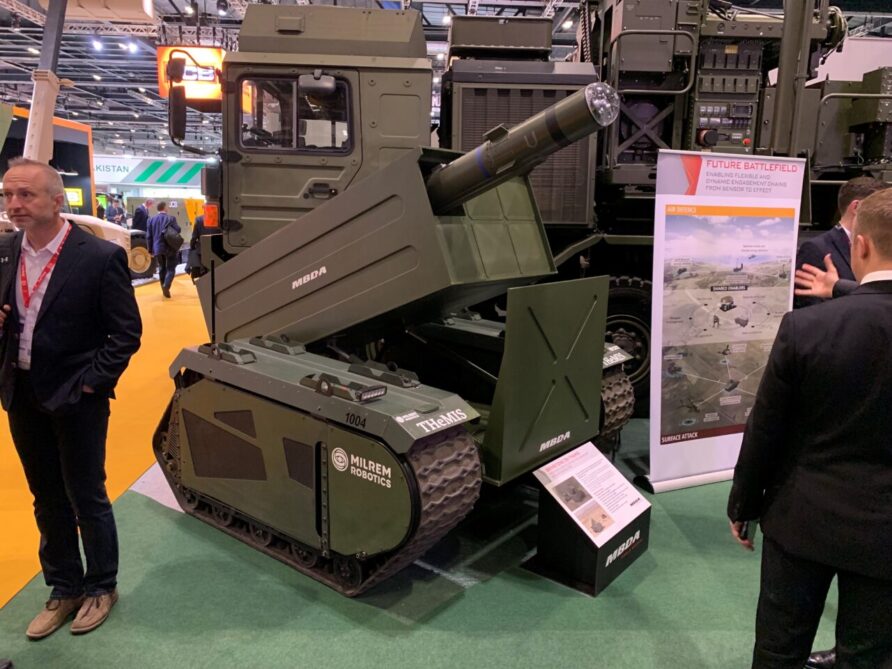
On a suitable trailer, it would be comfortably inside CDS dimension and weight constraints.
The image below shows a Hellfire II tripod launcher, but with suitable development, I wonder if the same could be done for Brimstone 3, given its similarity in external form.
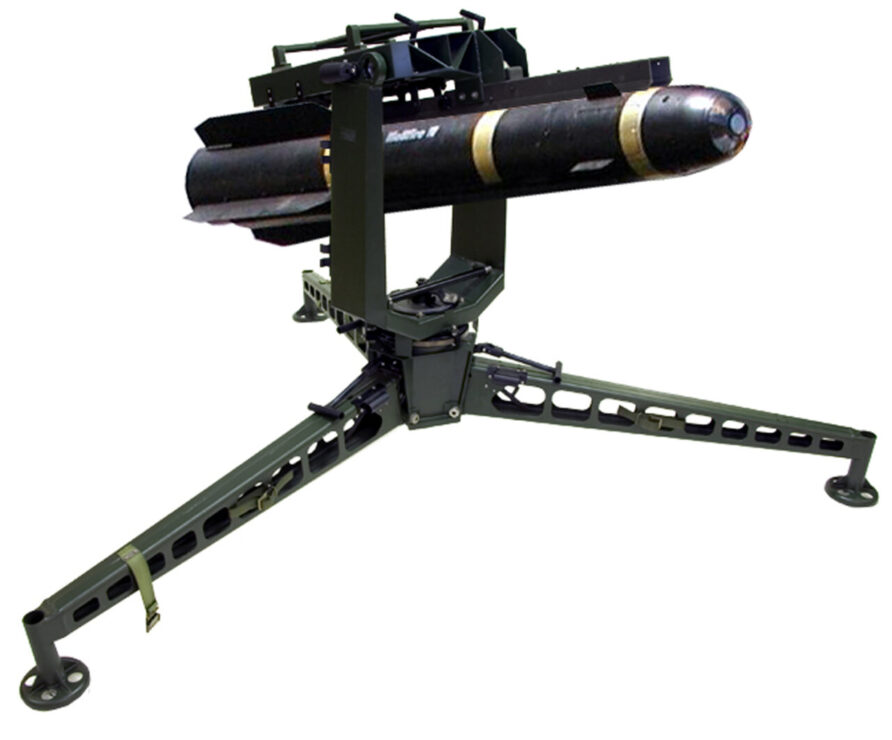
The recently ordered Saab Giraffe 1x is a compact system, does not need any air conditioning and runs off standard power supplies.
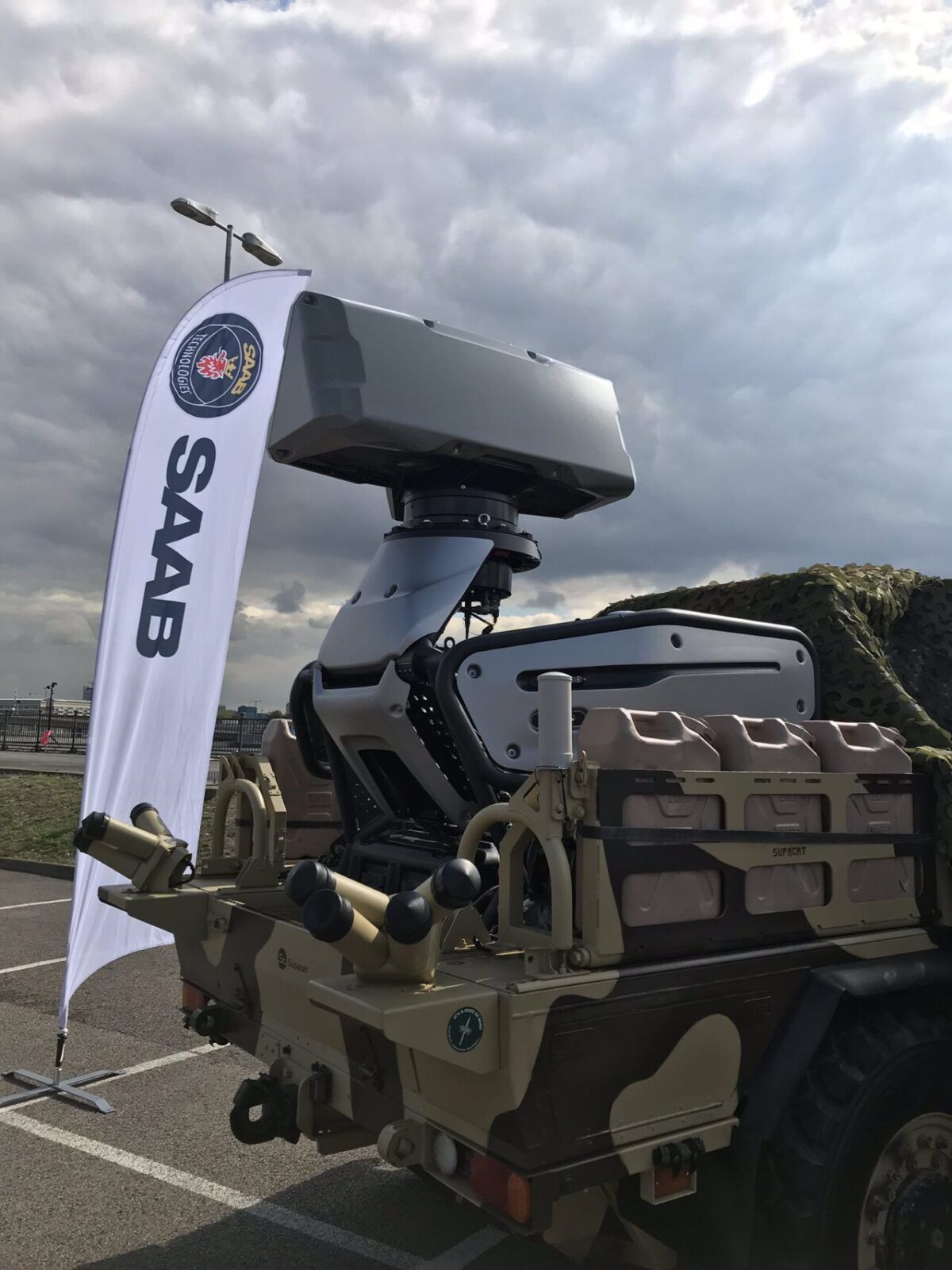
Although it can be broken down into smaller sub-assemblies for carriage, I’m not sure if those sub-assemblies would fit with a single or double CDS.
Hopefully, it would, together with C-UAS effectors, the Air Defence Alerting Device (ADAD) and something like a HVM/LMM Shoulder Launched Aiming Unit or Lightweight Multiple Launcher, it would be a powerful air defence system.
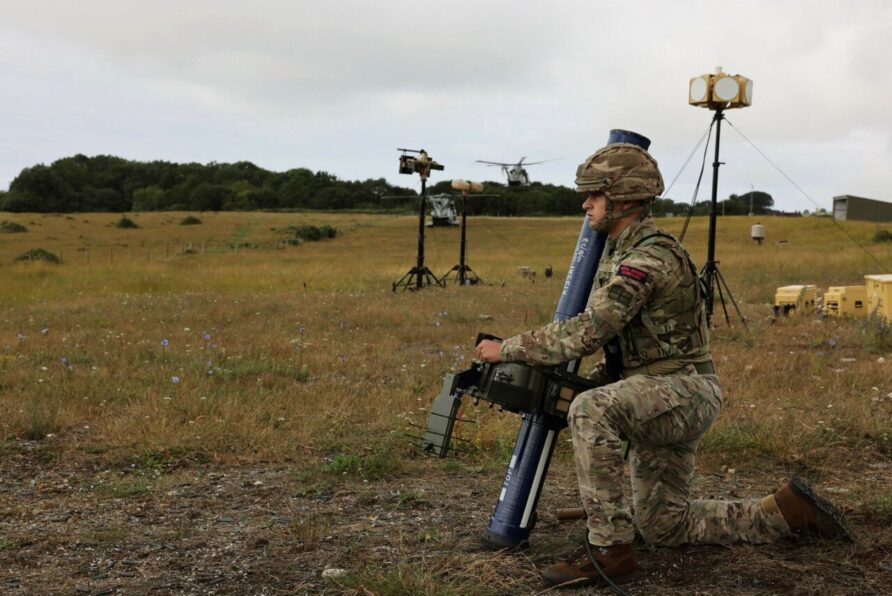
Direct Fire
The LV-TEH Combat Support Platform (although slightly oversized for CDS), shows a glimpse of what could be achieved.
The 118 kg Nobles Viper gun mount uses a manually aimed 30 mm M230LF, maintaining ammunition commonality with Apache.
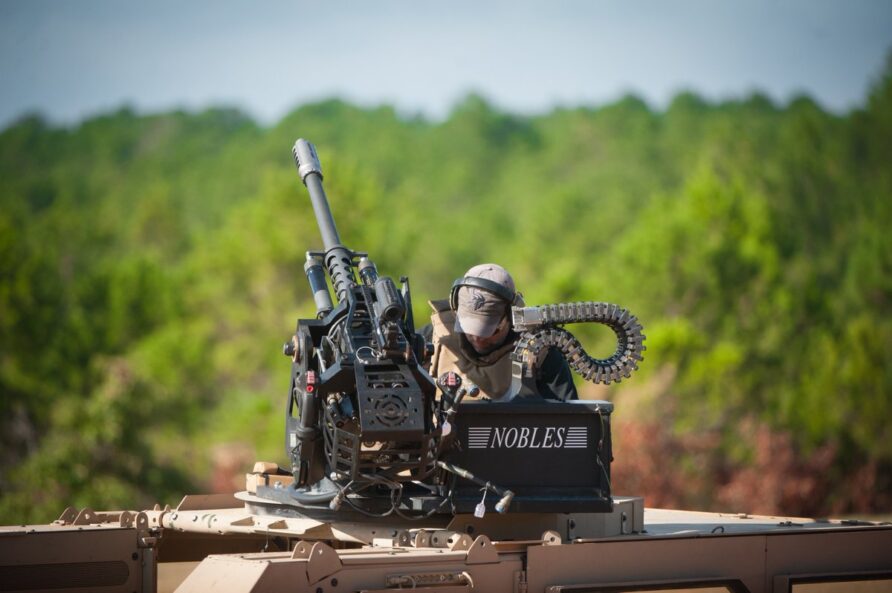
Closer to home, AEI has developed a cheaper and ITAR-free 30 mm automatic cannon called the Venom-LR.
The British Army has recently trialled this with an Unirobotics Trakkon RWS on a HIPPO HAWC uncrewed platoon load-carrying vehicle (just for reference, that vehicle won’t fit either)
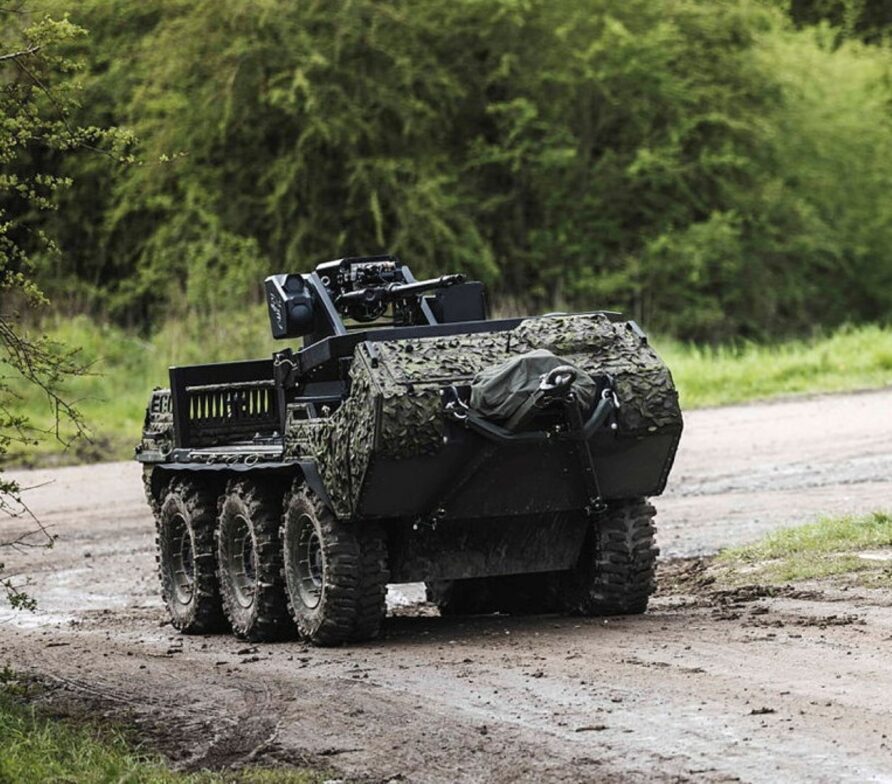
The length is just over 2m and with a total weight of 122 kg without ammunition, not difficult for CDS.
There is a wide range of 30×113m ammunition available, so it would be a significant direct firepower uplift.
Other Systems
As long as it fits inside boxes and inside the footprint of a CDS-compatible trailer, there are no practical limitations to the types of equipment that can be carried.
Be that UAS, loitering munitions, tethered UAS, short gap crossing, Light Electronic Warfare (as shown below), medical, communications, command spaces, EOD robots, UGV, CBRN detection equipment, airfield lighting or air traffic control.
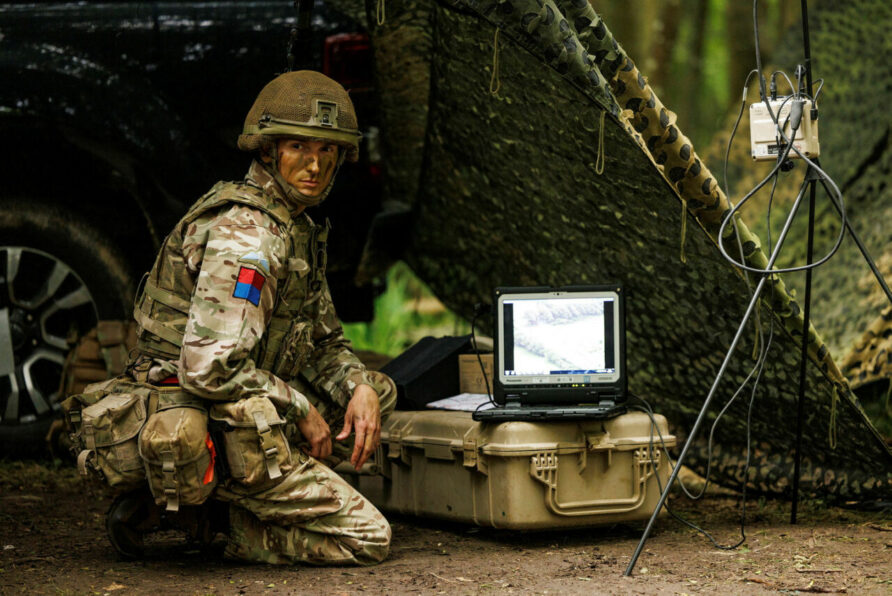
Summary and Thoughts
The amount of time and resources we spend on this should be proportional to the value we ascribe to parachuting capability in general.
I appreciate this can be quite a polarising subject but do think, despite what the Russians did in Ukraine, parachuting retains a broad applicability to contemporary UK defence and is therefore worthy of future investment.
And when I say investment, I don’t mean Ajax or Boxer size investment, I mean some better trailers’ investment.
There also has to be an ongoing commitment to incremental improvement, finding value in better load securing on a trailer might not be as attractive to careers as the big ticket items and high-level concepts, but it is no less worthy of intellectual investment.
C-130 has gone, and C-17 is always in demand elsewhere, no point in complaining about it, the future of 16 Airborne Brigade is the A400M.
Until we invest in a large vehicle despatch platform for the A400M, CDS or double CDS weights and dimensions are the absolute and undeniable constraint.
16 Airborne Brigade is not just the Parachute Regiment, engineering, signals, medical, logistics, and artillery personnel also wear a maroon beret.
Without stores and equipment, and reliant on what can be bundled out the door or carried on a soldier’s back, there is a large credibility gap to be addressed.
Stick with Quads
As much as I love the idea of each one of those quad bike ATV alternatives, especially the Fresia F-18, MTT-154 and Matros Ziesel, the quad bike is here to stay. Until battery systems improve, the energy density of fossil fuels counts for a lot when every kg counts.
We should still be getting experience with these novel systems, but our priority should be to achieve some almost imperceptible improvements with the Yamaha’s, i.e. racks and storage boxes, including Rotopax fuel and water containers.
Be Obsessive about Trailers
Accepting the longevity of the quad, the primary focus should be on working with a manufacturer to create a modular and adaptable trailer that maximises the space allowed by a double CDS.
There might not be a huge addressable market, but this is fairly basic design and manufacturing.
Trailer Frame and Deck
A flat deck sized to accommodate two 1.1mx1.1m pallets or a 2.16m × 1m pallet box would provide maximum load space.
This size also retains broad dimensional compatibility with Zarges K470, Peli ISP2, and CP Cases Amazon Rotomoulded Cases, in addition to being able to support most of the examples of small engineering plant and systems described above.
Pull-out ramps (like ATMP) would also allow small wheeled or tracked plants and pallets to be loaded without a hoist or crane.
Like this excellent design from Off Road Designs in Australia.
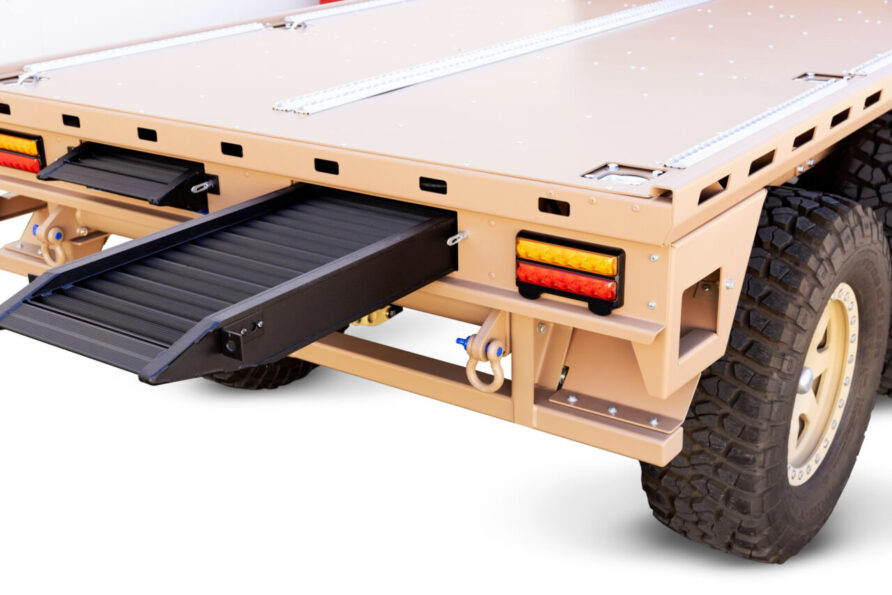
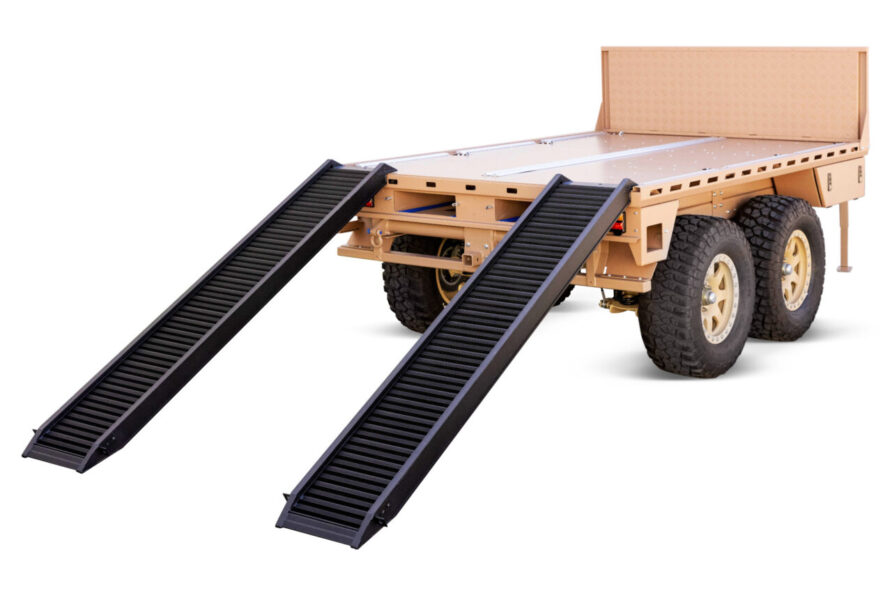
The deck itself would benefit enormously from using something like the Koller Engineering floor system with load-securing fixture rails.
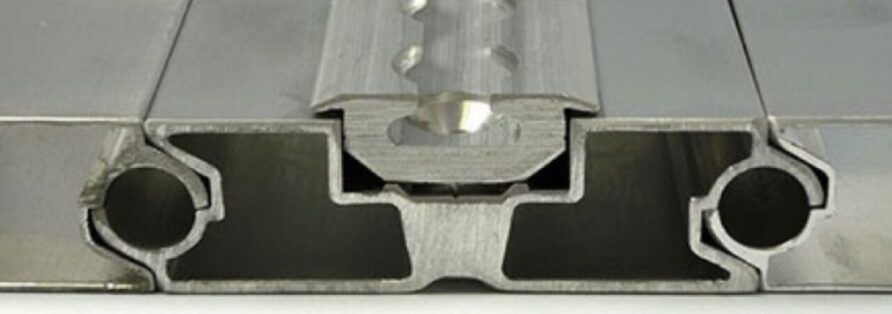
This would allow various tie-down clips and lashing fixtures to be used. Although this has origins in the disabled mobility sector, they have been rigorously tested and assured against significant impact loads for wheelchairs and seats. The Supacat Jackal uses them.
It might also prove useful to embed the 10cmx10cm inter-stacking pattern that Peli ISP2 and CP Amazon cases use to provide lateral stability.
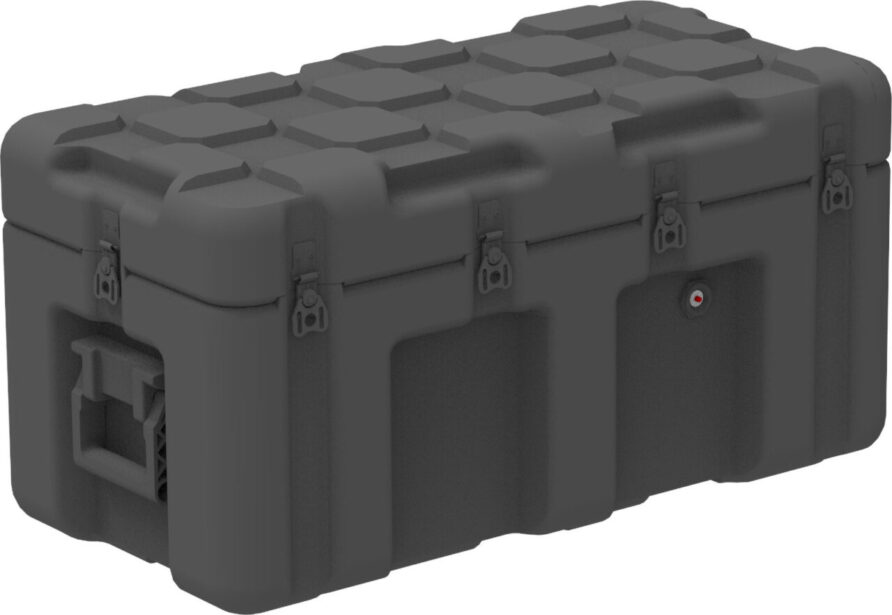
And Molle panels everywhere, of course.
With a flat deck, the trailer could be double stacked for air despatch if required.
Trailer Coupling and Undercarriage
If the trailer coupling was removable using captive split pins, it could be stowed under the deck for air despatch. This allows the deck size to be maximised whilst still compliant with the maximum length allowed by a double CDS.
Twin wheels (preferably the same as the quad bikes) should be underneath the deck, not to the side. This would result in a higher deck, with an attendant reduction in stability, but it is the only way to maintain load space without exceeding CDS width limits.
The rear of the undercarriage frame should have a secondary towing hitch pintle, so another trailer can be daisy-chained if the towing vehicle has enough power.
With an increasing focus in the High North, it would also be worthwhile to have the ability to replace wheels with skis, and whilst we are at it, helicopter slinging and pontoon attachment points (like the Pac Rat trailer from the USA)
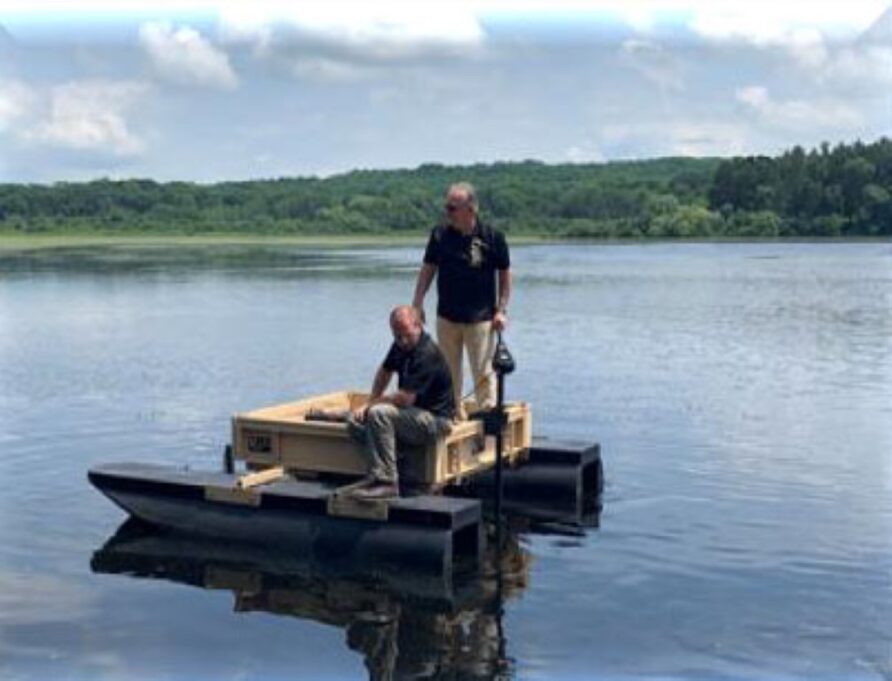
For commonality, those pontoons could be from the in-service Infantry Assault Bridge, compatible with the new and various Easibridge systems
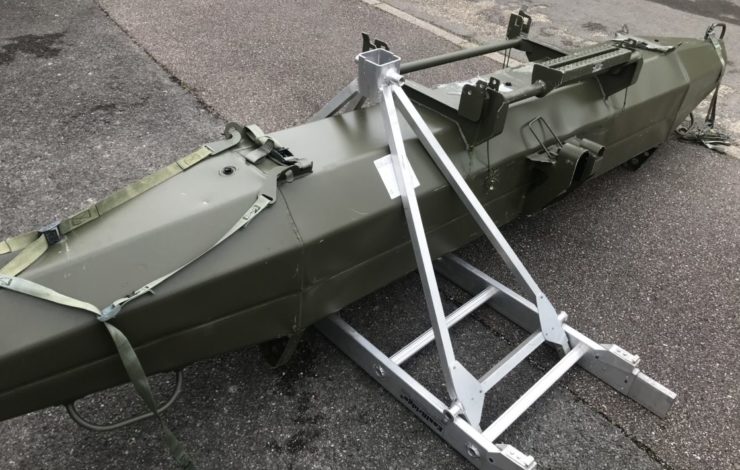
Build Out From There
Without wishing to sound like a trailer-obsessed weirdo (stand fast you lot), it really is the foundational element of any means of exploiting CDS further.
I am also not a fan of making the trailer too integrated with equipment and systems because the more you do that, the more you make any capability contingent on not having a flat tyre.
So, any additional capability should be demountable from the trailer or self-propelled, capable of being used independently of it.
This is why we should pay attention to boxes, pallets, and trailer ramps and fittings, but you knew that.
With a suitable longer-term plan, capabilities could be built out from boxes, trailers and demountable vehicles that span the full gamut of 16AAB capabilities, like Lego.
Everything from applied violence to deployable runway lights.
None of this kit, especially the engineering plant, is what could reasonably be described as ‘heavy duty’ so it must be seen in the context of being better than hand tools.
And finally, none of our kit is getting any lighter, whilst a quad bike trailer is not a MAN SX, it is better than Shanks’ Pony
Or even a quad ATV.
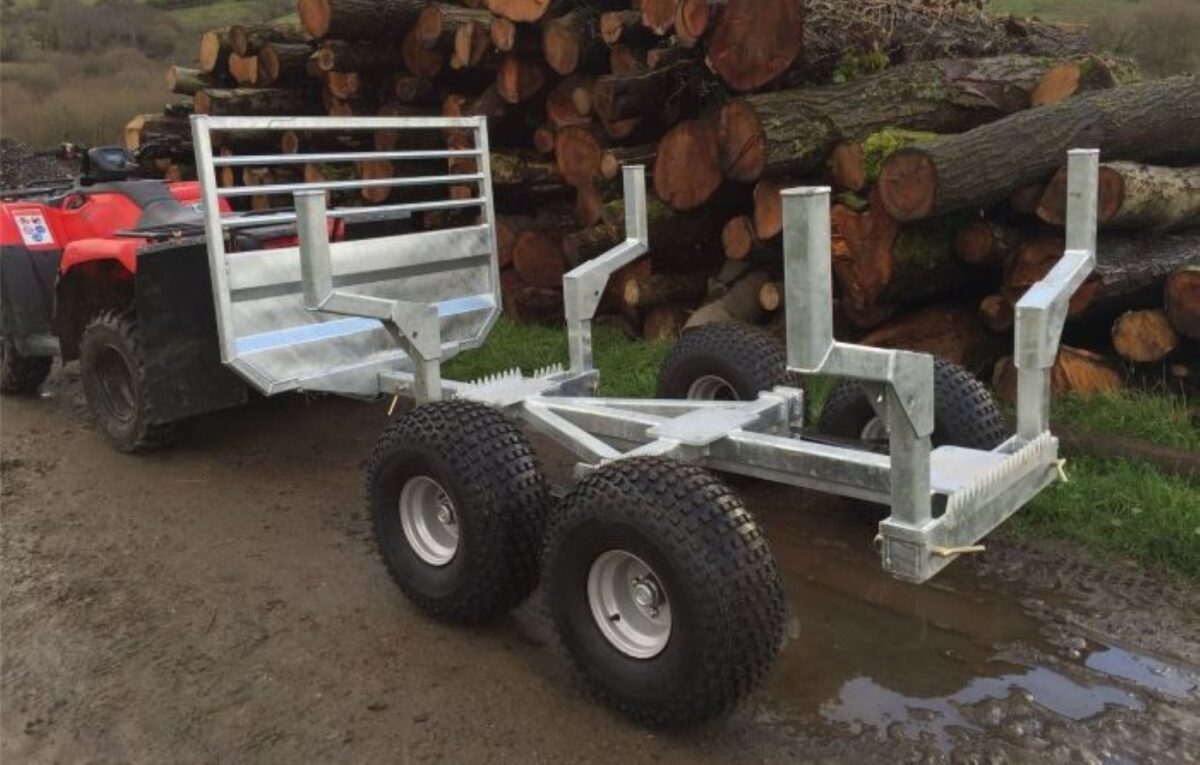
At the smaller scale, forestry log haulers can be used that use the log itself as a component of the trailer.
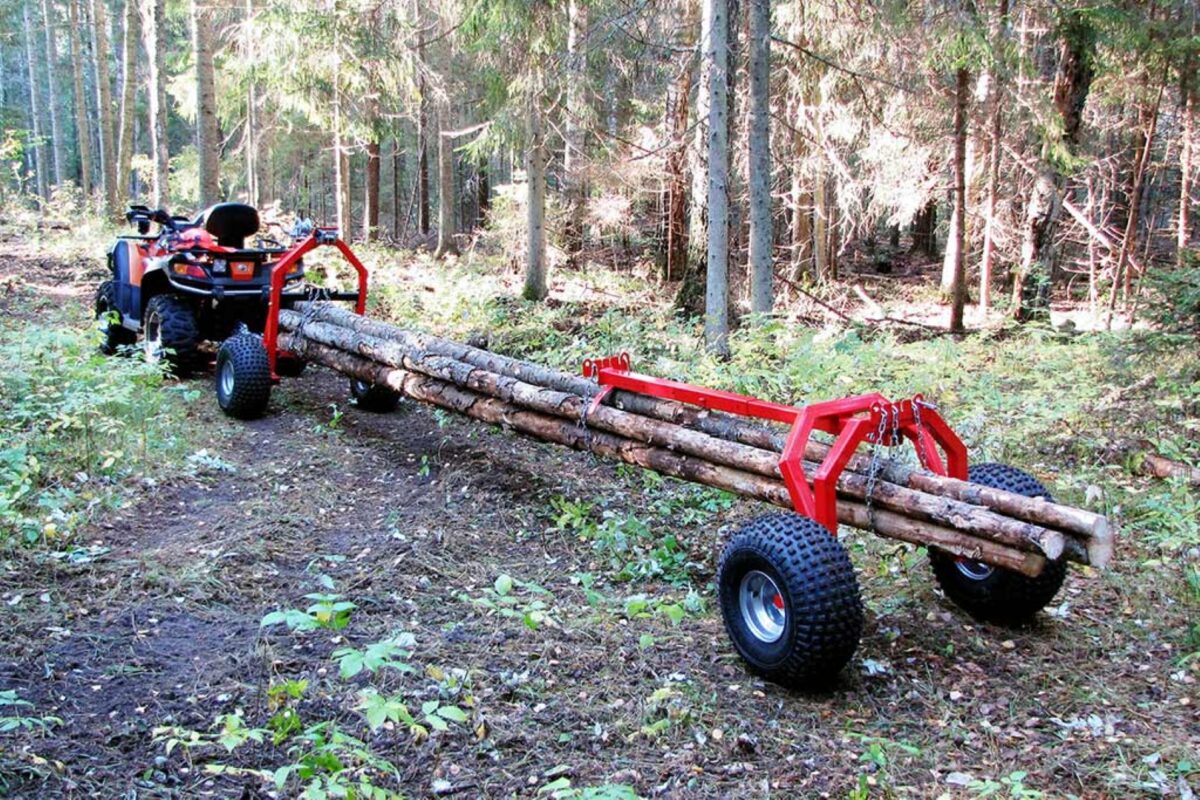
At the smaller end of the scale, and with no hydraulics, the Kellfri trailer shown below is an example.
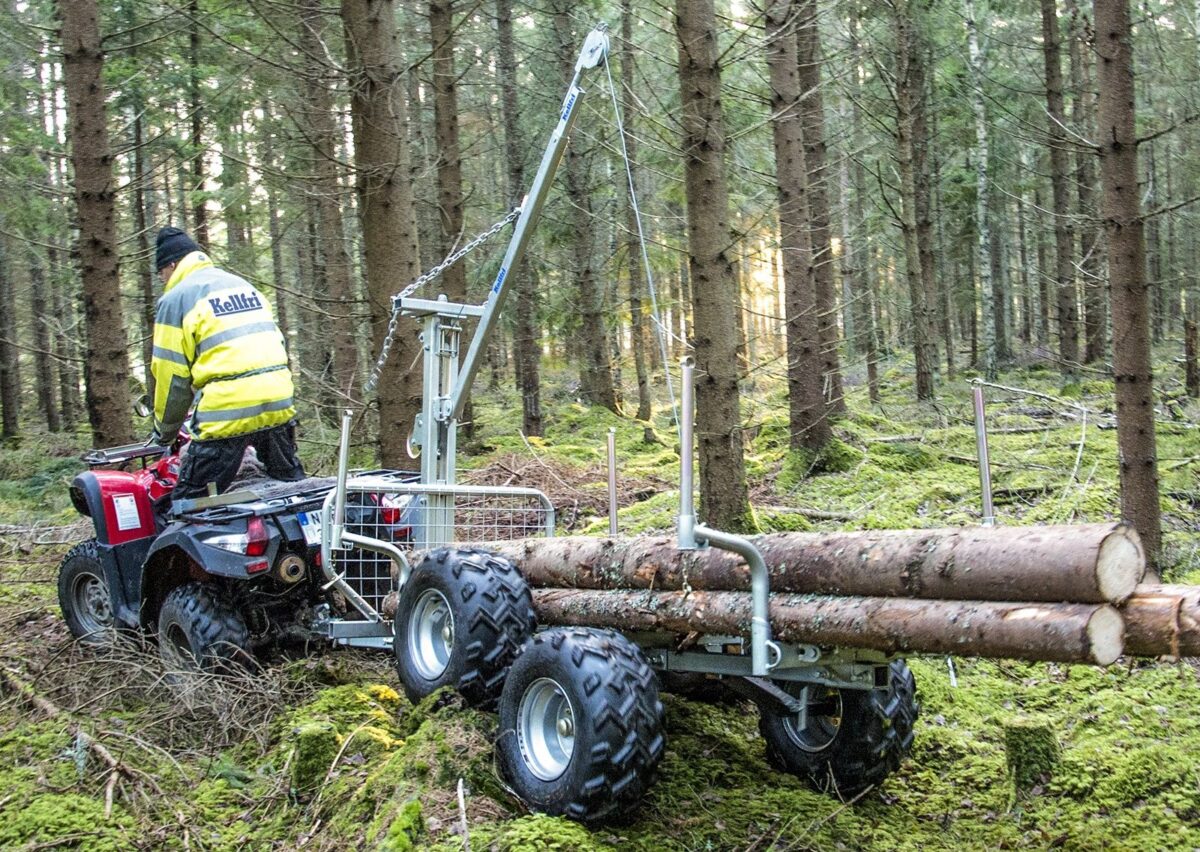
The video below shows one such design from Kranman in Sweden.
Expanding on this basic approach, various alternative fittings and fixtures are available, some that are screwed or riveted in, and some specifically designed for the particular frame system.
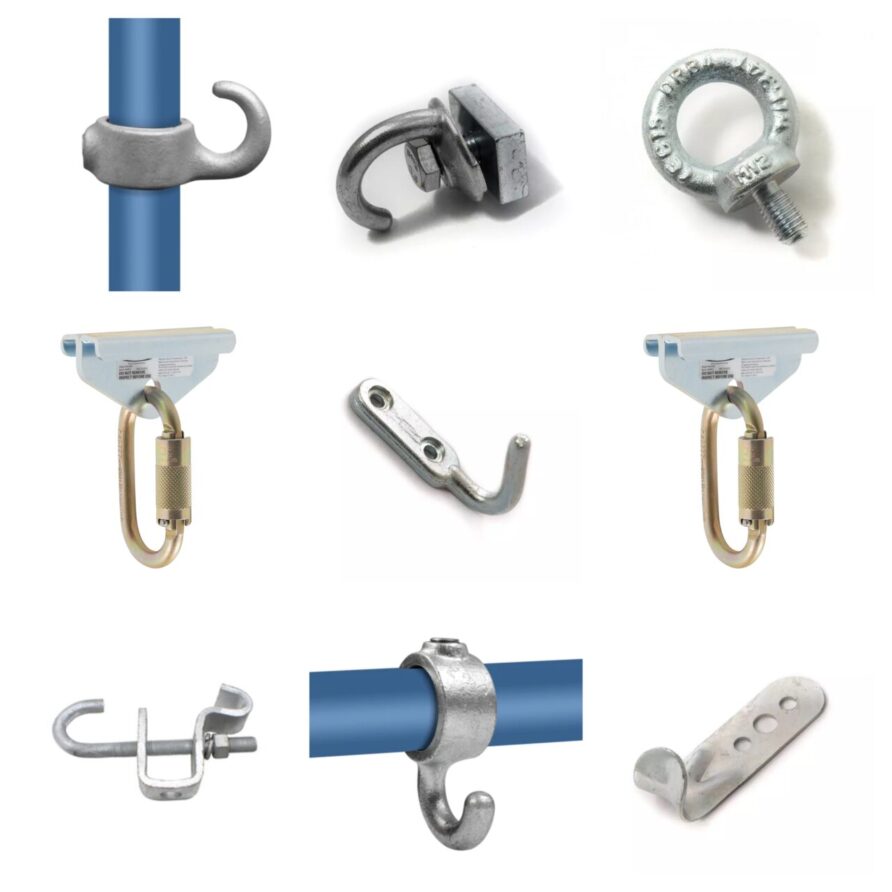
Modular Lightweight Load-carrying Equipment (Molle) panels and strips could be used on vertical load restraint frames. These are available from online sources, although not as many in the UK and USA.
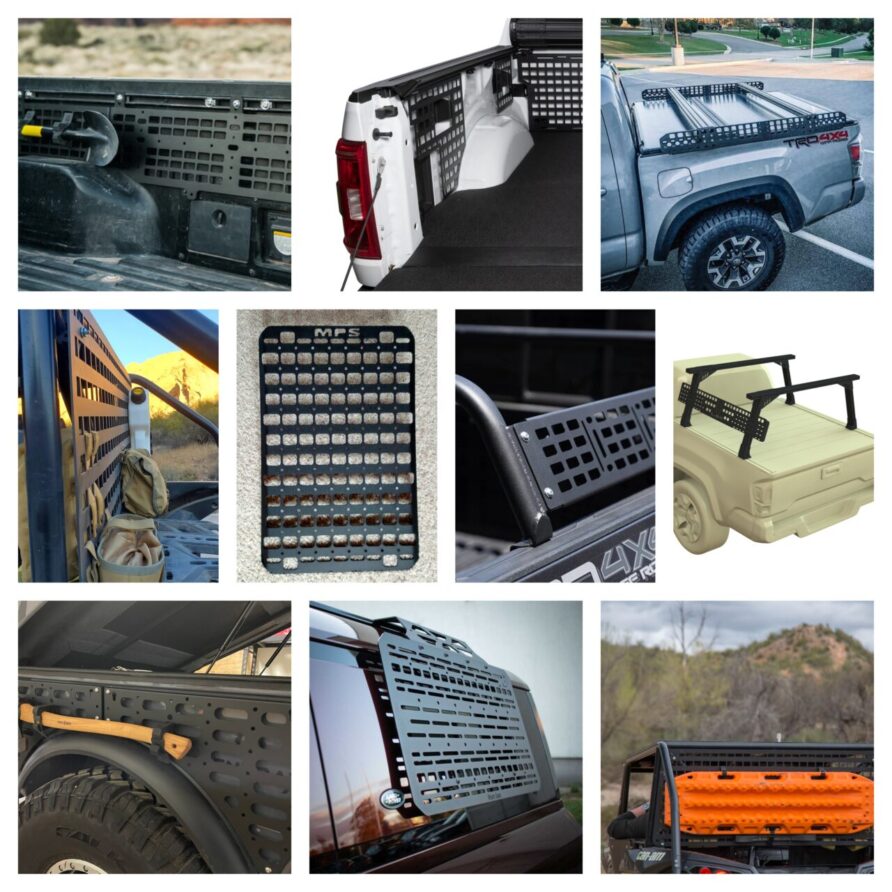
More sophisticated options might be worth exploring, the point of this is to test and prototype using readily available materials and components.
The first would be to optimise the load bed for likely items being carried, an NLAW, stretcher, lightweight bridge or Peli ISP2/Amazon box. The latter uses a 10 cm x 10 cm grid to provide lateral stability, inter-stacking trays can be purchased and screwed directly onto a load bed.

A Koller Engineering floor system with load-securing fixture rails would provide even more options, although probably more sensible to use the fixture rails and either screw them directly into the load bed or frame or, if a router was available, recess them in the plywood (or other sheet material that formed the load bed).
Although these rail systems have origins in the disabled mobility sector, they have been rigorously tested and assured against significant impact loads for wheelchairs and seats.

I have used another image collage below to illustrate the abundance of load-restraining rail systems that are available, none of this is difficult to source.
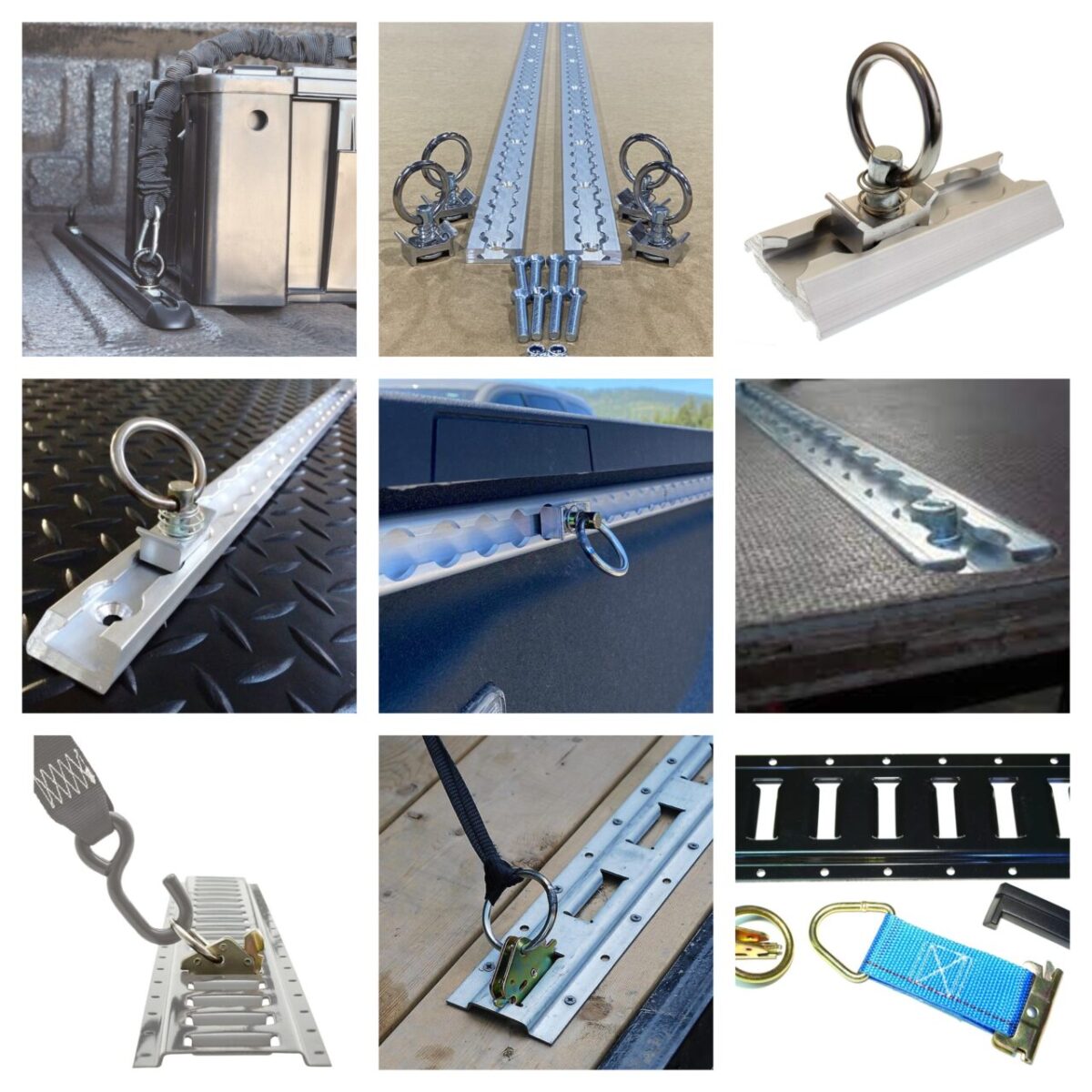
Buying a larger trailer opens up the options, the Logic OXR for example.
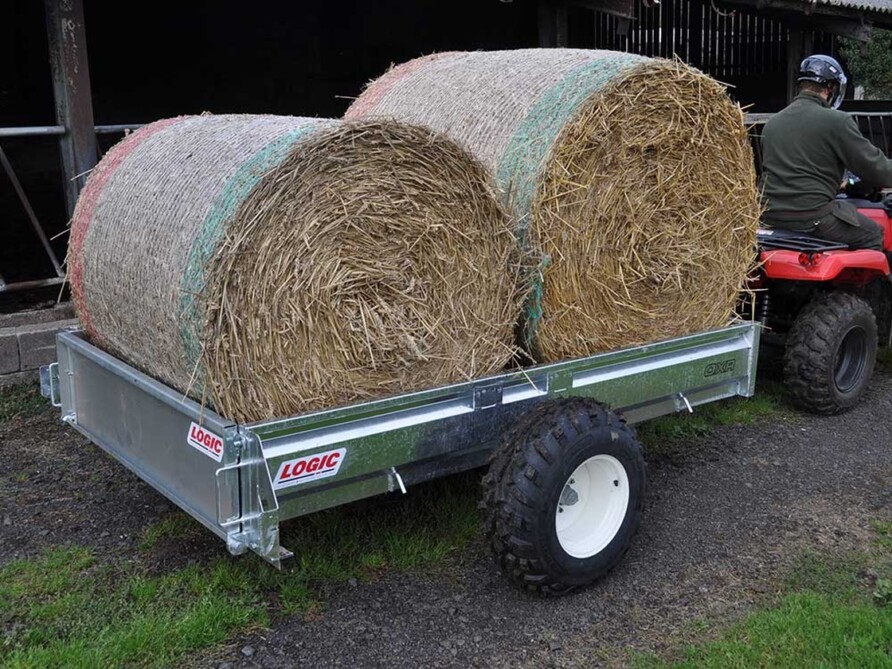
This would enable a larger and self-contained piece of machinery to be towed by a quad bike.
The sub 500 kg excavator market is somewhat rarefied, but there are a couple worth looking at.
First is the 380 kg Komatsu PC01-1
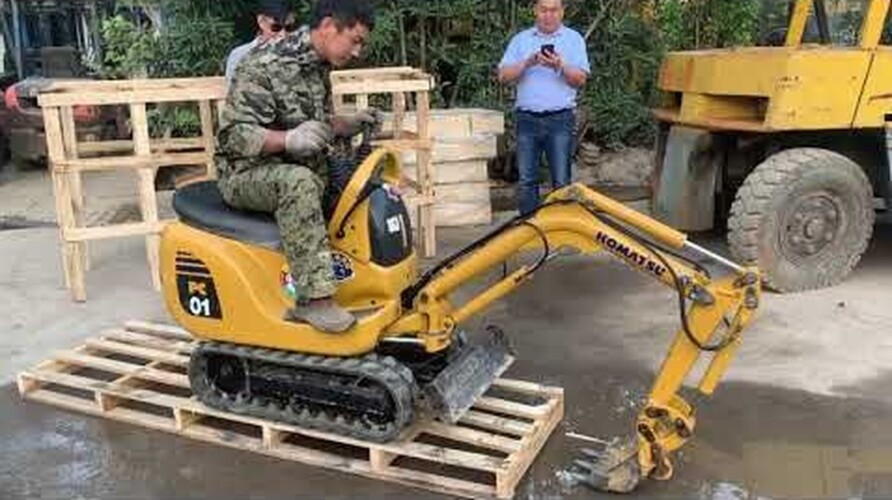
Would you be able to keep the smile off the faces of onlookers?
Second, the Struck Magnatrac RS1000, despite its rather amusing appearance, is capable.
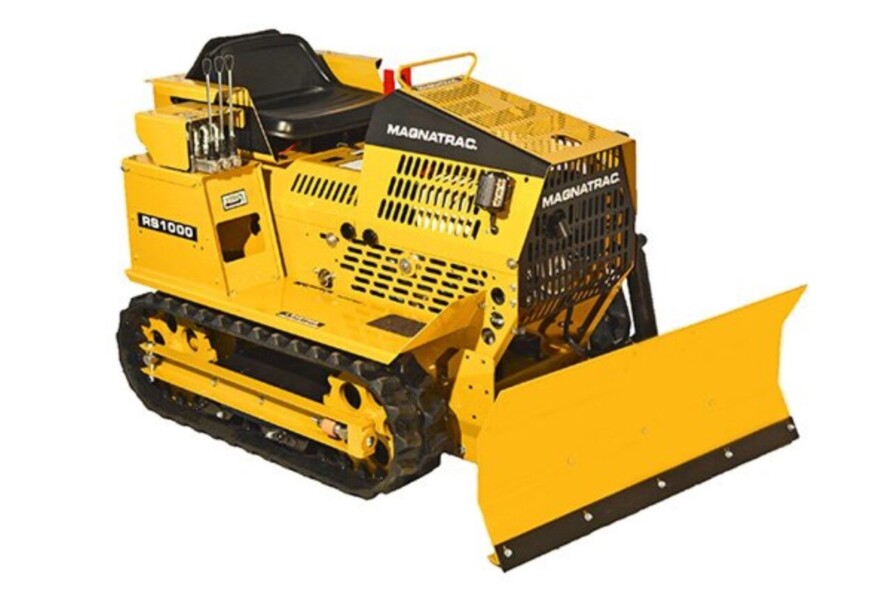
It can be fitted with rubber tracks, a rear ripper blade, several dozer blades, and even a backhoe kit with a digging depth of 2m.
One of these with a larger trailer would be at the upper limit for one of our quad bikes to tow.
Quad Bike Towable — Summary
Keeping weight down and dimensions small severely limits options, and one would have to seriously question whether any of these devices would be appropriate for light role forces. I have included them to show the possibilities, even though I do quite like the look of the Magnatrac RS1000.
Interestingly, in terms of weight and dimensions, those items described above could easily be carried as an internal load on a Chinook and Merlin, and a parachute air despatch platform.
They can be carried as an underslung load by all in-service helicopters, from Wildcat to Chinook. What they lack in duty cycle and capability, they certainly are not deficient in the portability stakes.
I can’t say I am a fan of the direct attachment approach.
The tow-behind devices look simple, easy to operate and cheap, but they take up a valuable towing hitch.
The larger trailer and standalone machine provide the same potential capability/capacity as the tow behind. When offloaded, the trailer can be used for other tasks whilst the machine is being operated, and you can not but be impressed by the Magnatrac.
It must also be noted that pilling up earth to form a berm/shell scrape with a small dozer blade like on the Magnatrac would produce fast temporary protection from shell fragments.
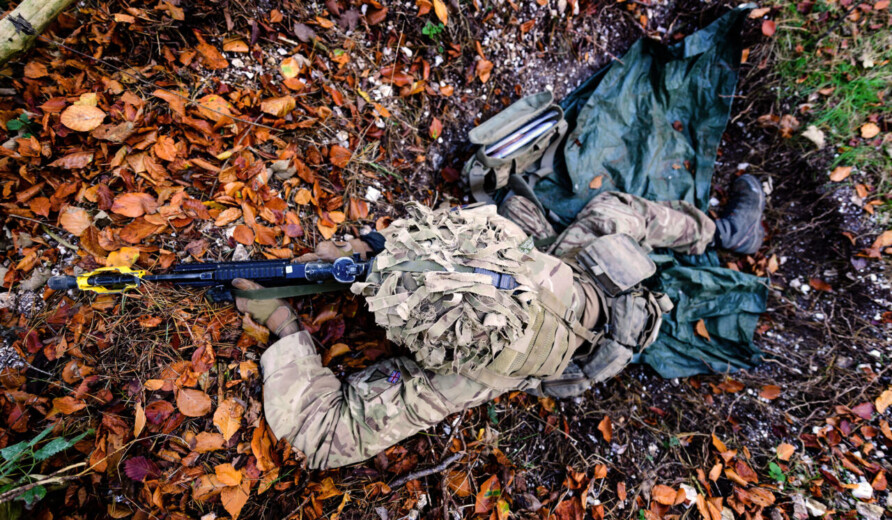
Could their utility and versatility be improved?
Instead of lashing stores to racks with bungee cords and webbing straps, a more design-led approach might exploit modular systems like Rotopax fuel and water containers.
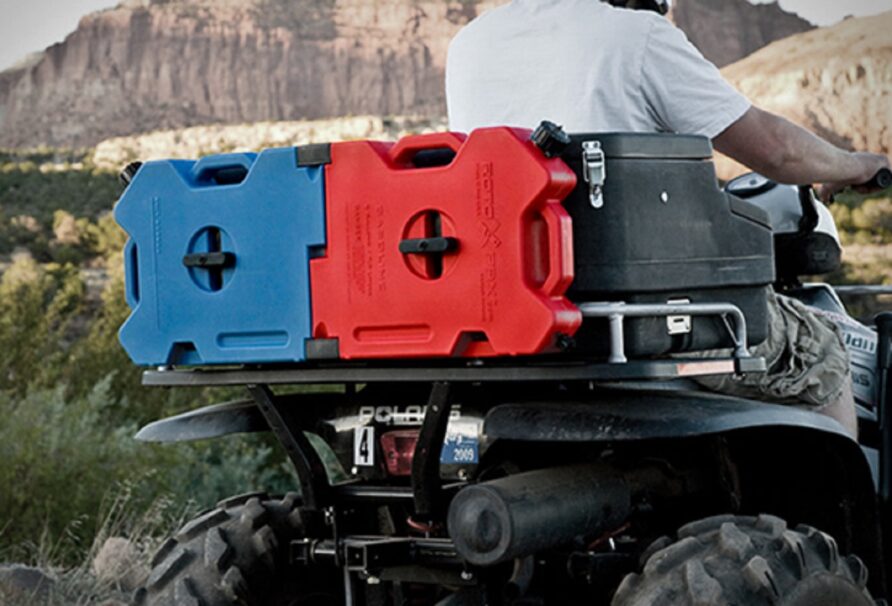
Or Molle panels.
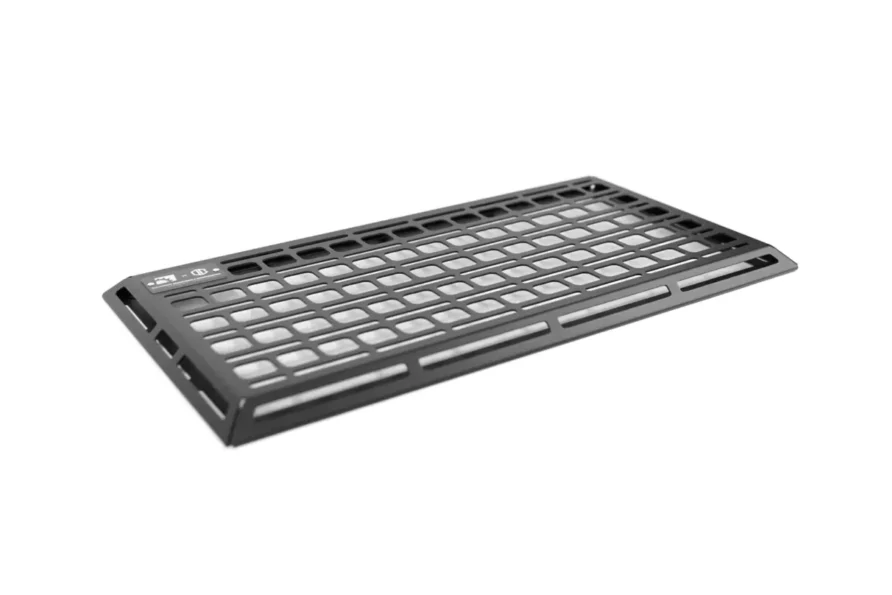
Other storage boxes, racks, and load bed extenders are readily available.
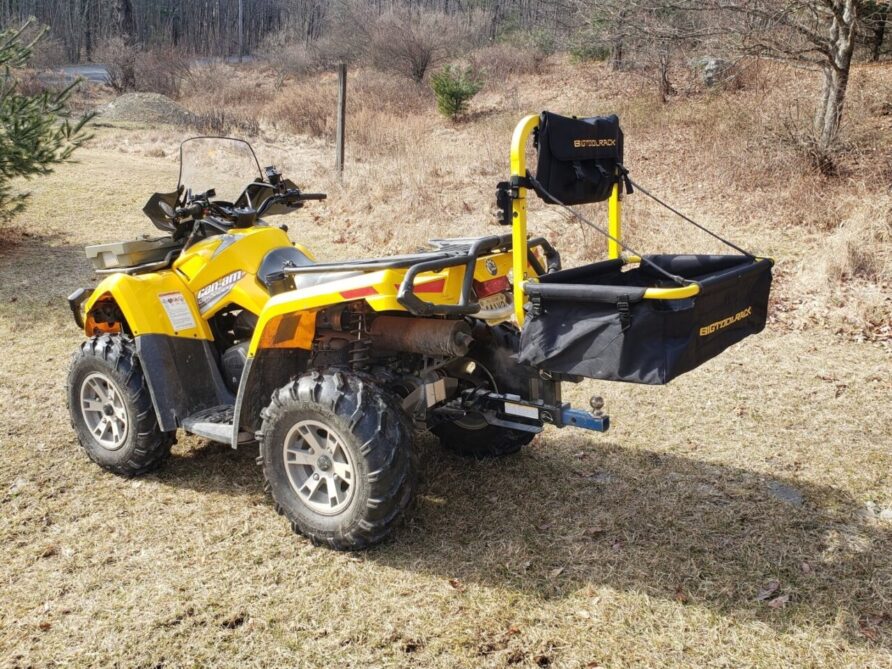
At just under eight hundred Pounds, the Quadcrate Butterfly front and rear racks fold out to secure longer items, mortar barrels, telescopic masts or NLAW.
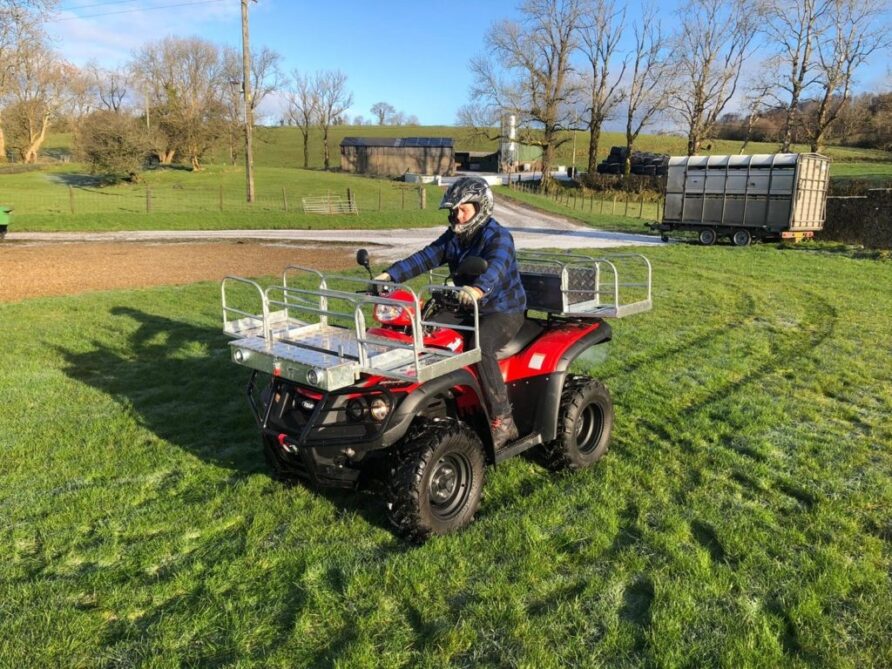
And for those that work with military working dogs…
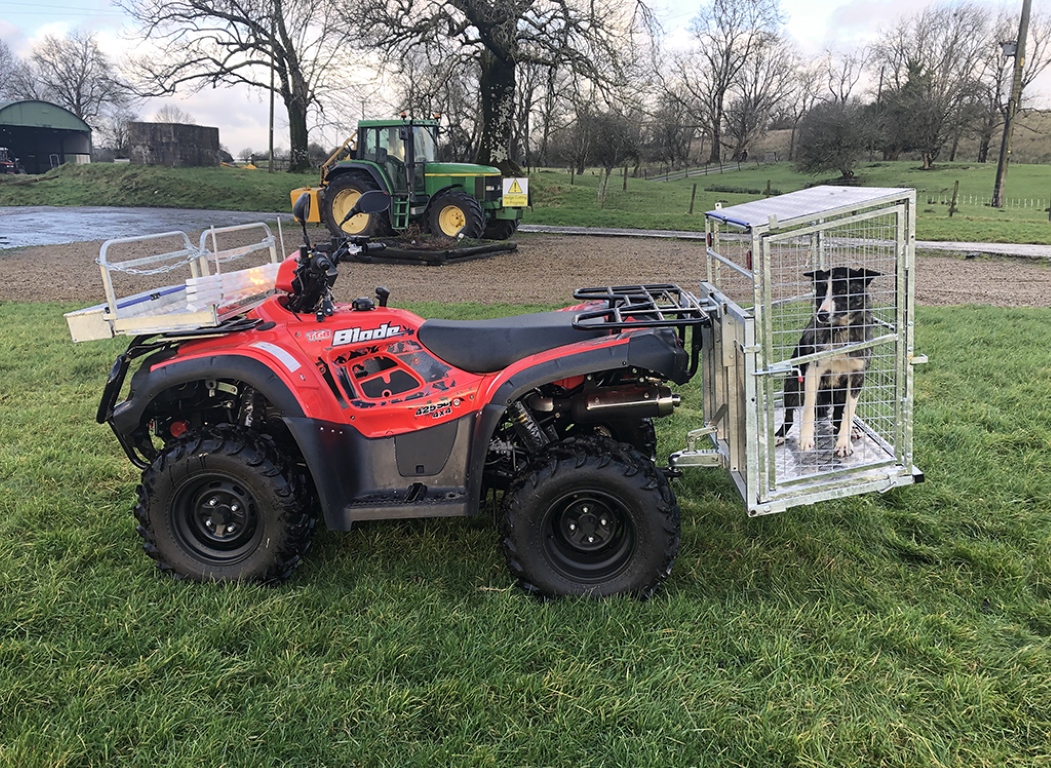
The same company also makes a barbed wire dispenser that fits the back of the vehicle.
LV-TEH in Latvia makes a similar range of storage racks.
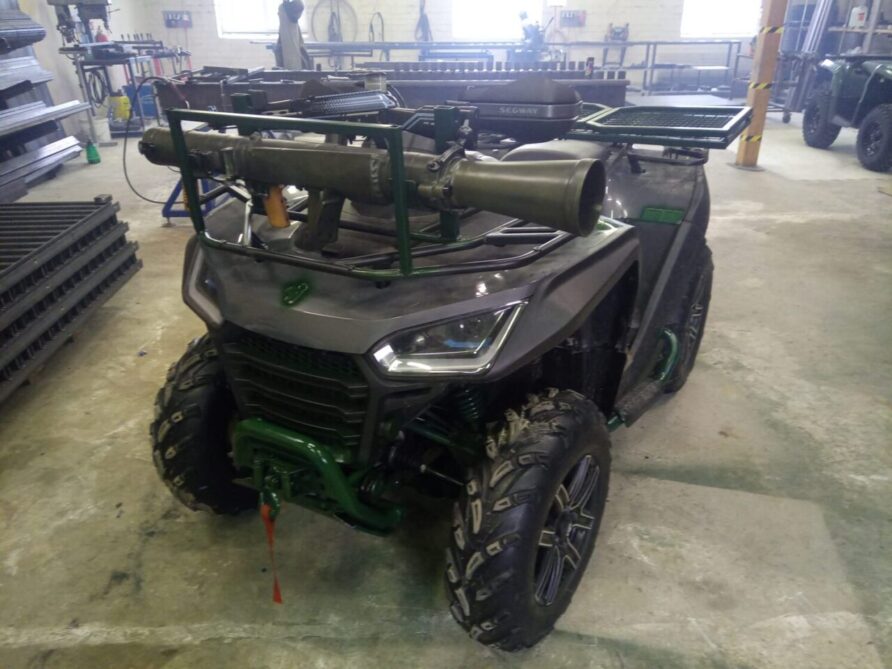
Building industry modular storage containers like the Milwaukee Packout with compatible mounting racks are being increasingly used by outdoor enthusiasts.
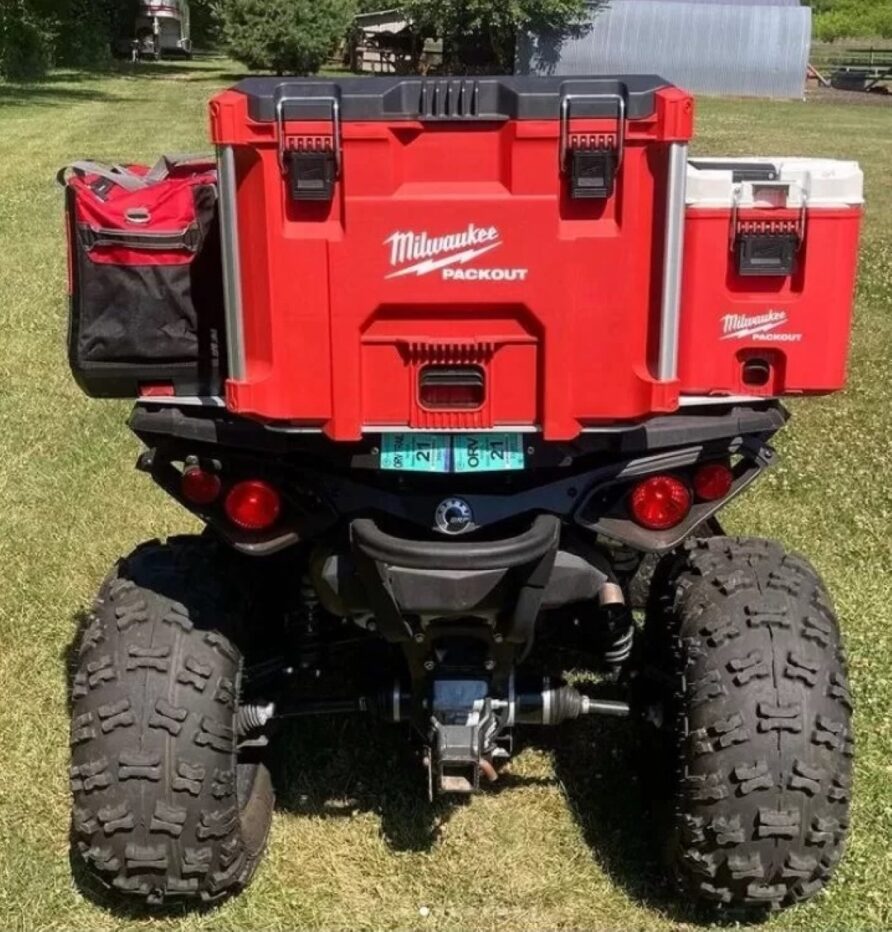
The Estonian Iron Baltic ‘mini motion’ package turns a quad into a light-duty bulldozer.
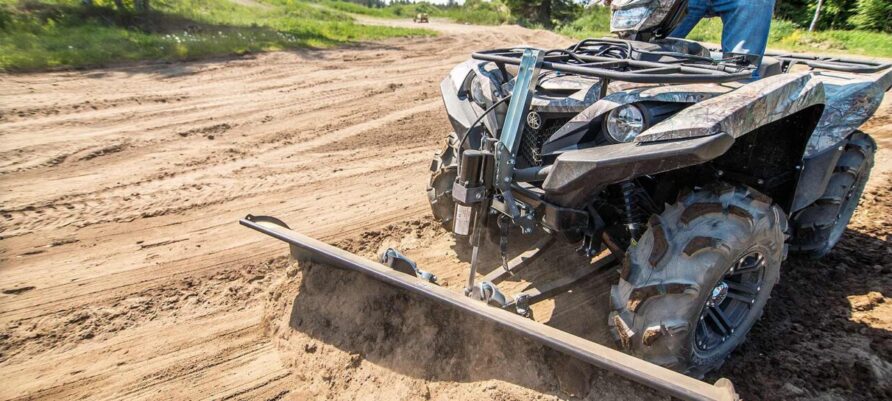
Atlok in Finland offer a similar system but with different blade and bucket options.
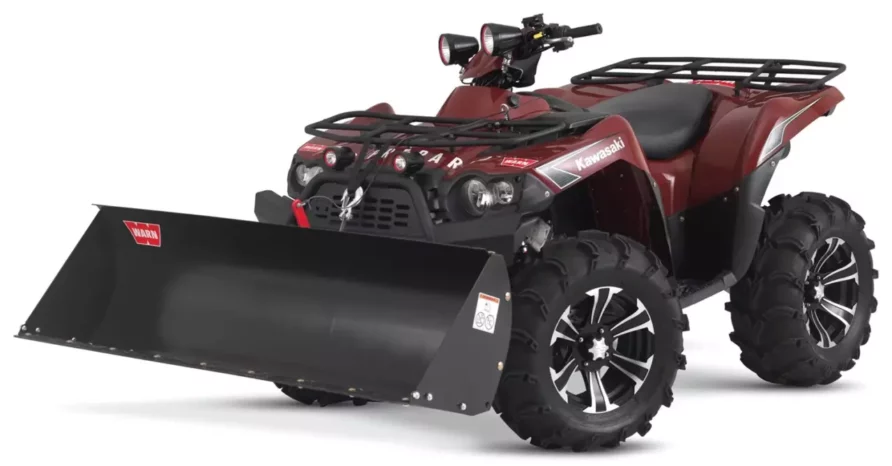
A power broom can be fitted, making use of a standalone engine, useful for clearing small debris from runways.
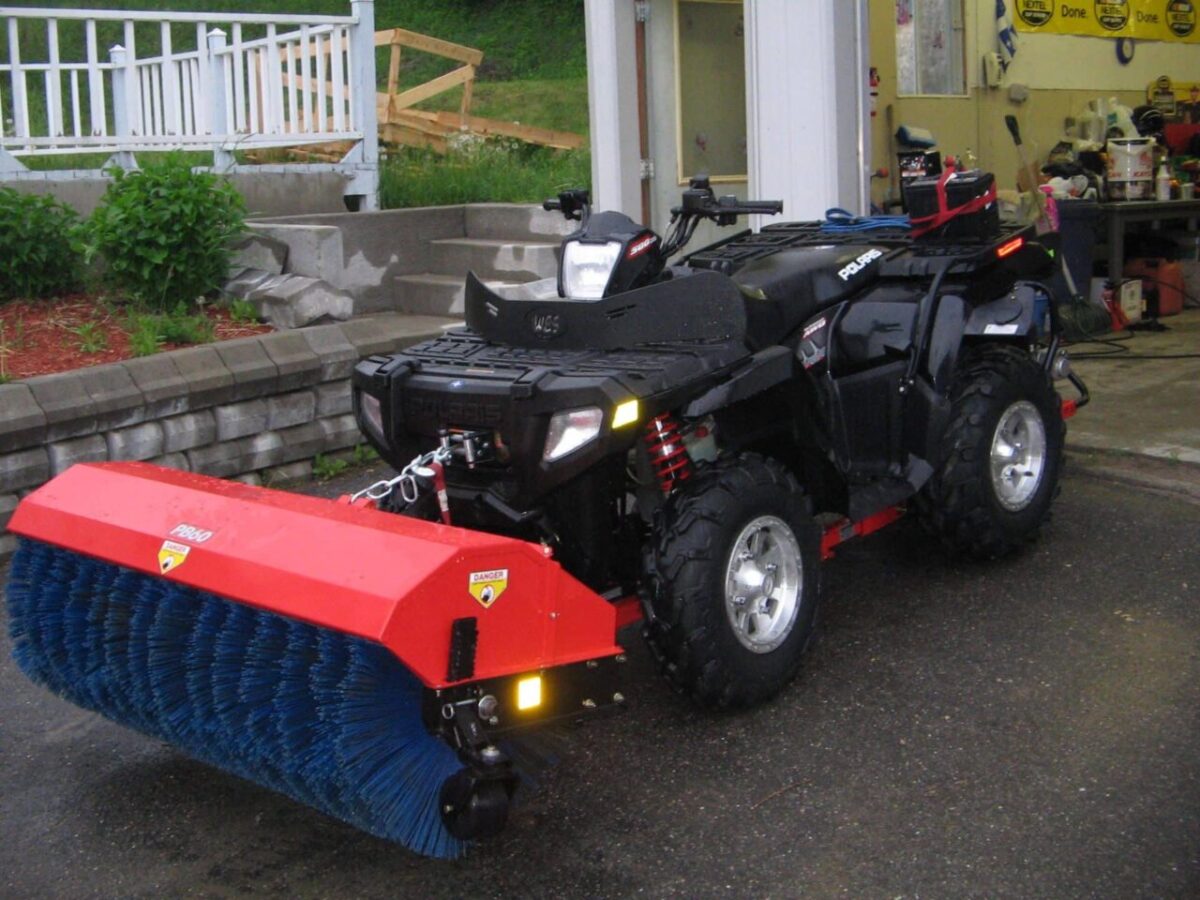
Flail mowers, stump grinders and soil stabilisation solution sprayers might find some applicability in niche runway clearance and development roles, all available for ATVs.
Wild Hare Manufacturing in the US makes a system that turns an ATV into a lightweight loader, with a bucket or pallet forks.
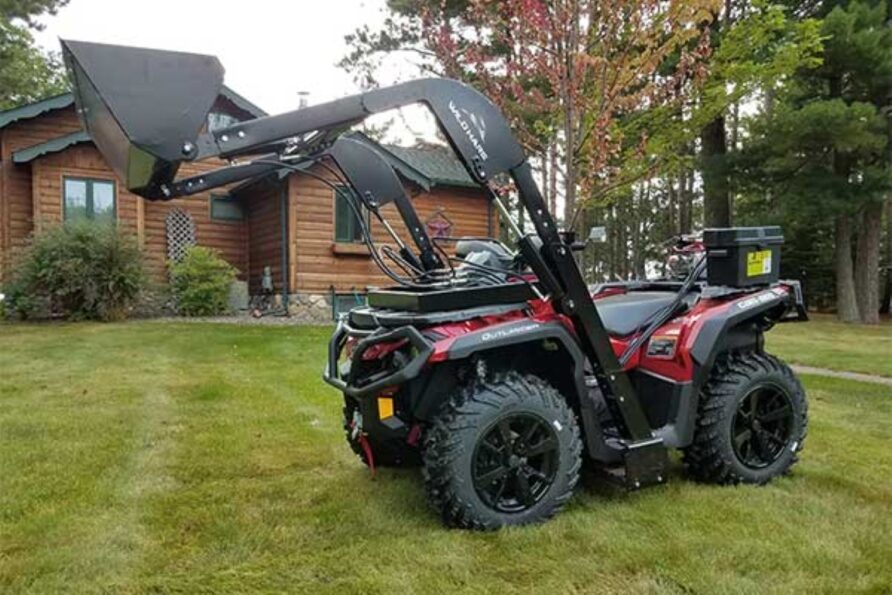
None of these would be permanently attached, needing to be assembled on the ground, and would take up their space in a double CDS position on an aircraft.
Are these going to dig an AS90 pit, no, of course not.
But in the spirit of finding versatility with what we have, and doing things even marginally quicker than with hand tools, they could be considered.
Their 150 kg max payload is quite low and the stepped body design (to keep their width the same as the quad bike) means the width at the bottom is small, not optimised for pallets or larger loads.
Longer and higher capacity trailers are available, single or twin axle, aluminium or MDPE body, tipping or fixed, wheels inboard or out.
Using a flatbed design with demountable side rails as shown below would allow them to be rigged two per 96″ CDS, and the model shown, if designed with a sliding or demountable hitch arm, would be small enough to fit inside the single 48″ CDS footprint or four per double.
Low-density loads like Bergen’s could be secured using tie-down points and cargo net, or with the addition of demountable side rails.
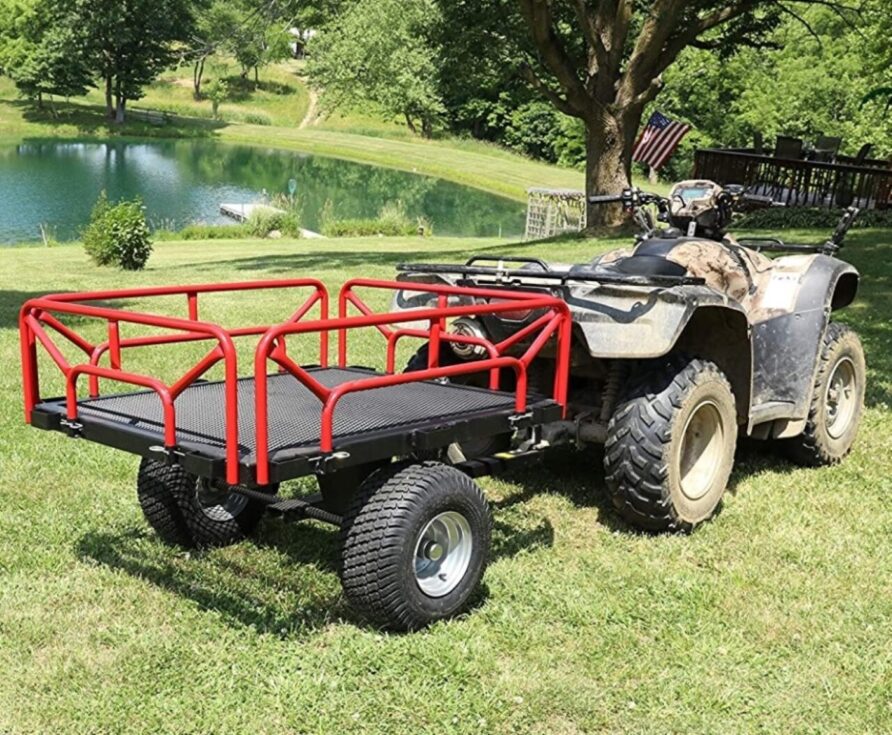
Simple things like having welded lashing rings at convenient locations can create a tangible improvement, even better with a cargo restraint system like Koller Defence supply.
Although the image below shows a simple flatbed trailer that is 4″ too wide for CDS, one imagines it would be a relatively simple engineering change to make it smaller. A twin-axle flatbed could be used for larger and heavier loads than the Logic trailers, and with a simple load bed, also rigged two high.
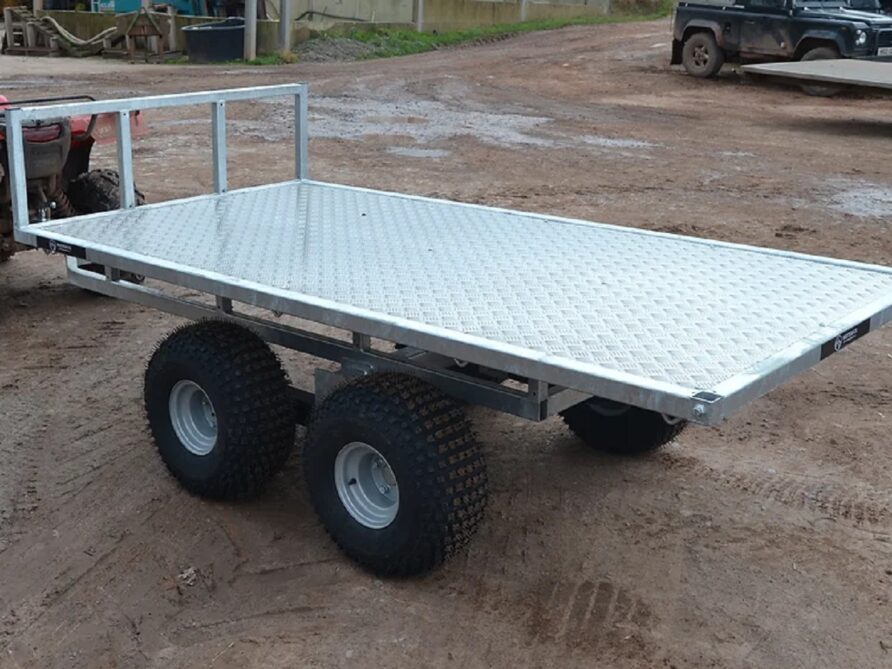
The LV-TEH Combat Support Platform is approximately 200 mm too wide, again, the concept is similar.
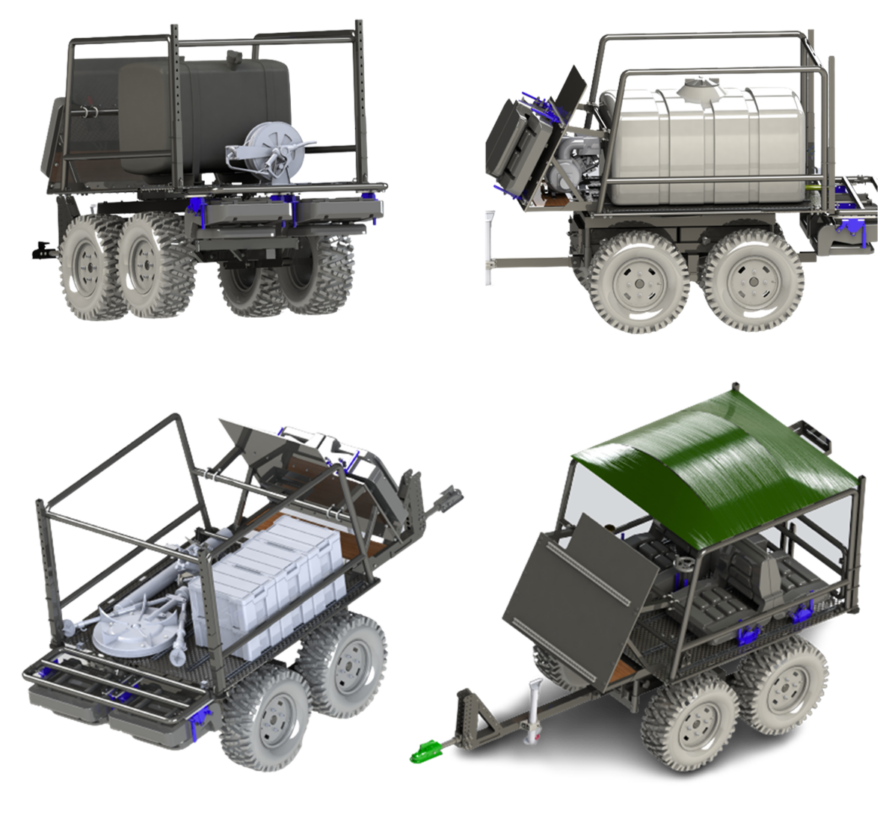
With a set of ramps, these could also be used to transport some engineering plant described below.
A similar design is shown below in a dedicated stretcher carrier version.
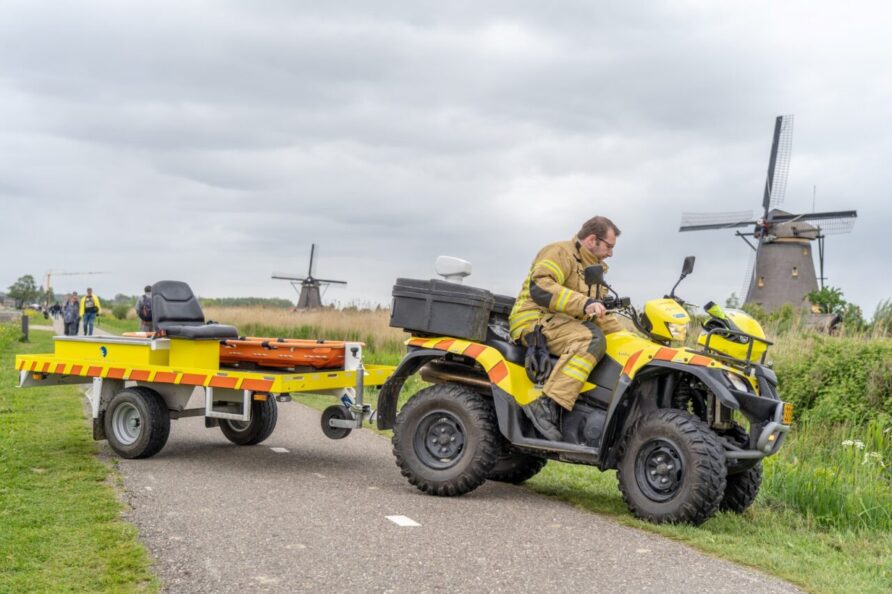
As all Think Defence readers know, there is a world of trailers out there, including one that can even be turned into a boat (although this particular design is four inches too wide for CDS)
With higher-density stores like ammunition, it would be relatively easy to max out on the typical maximum 700 kg payload of larger trailers, but even accounting for the weight of the trailer, it would still be within the 1 tonne maximum CDS payload. Whether an in-service quad bike ATV could tow a 1-tonne trailer is also questionable.
All that said, six quad bikes and six trailers, with a total payload of 4,200 kg, are perfectly possible for a single A400M flight. That is roughly 420 81 mm mortar bombs (assuming all packaging is generally the same weight as the bomb).
Although going somewhat against the principle of everything having multiple uses, the ATR Trailer from All Terrain Res-Q in the US does look effective.
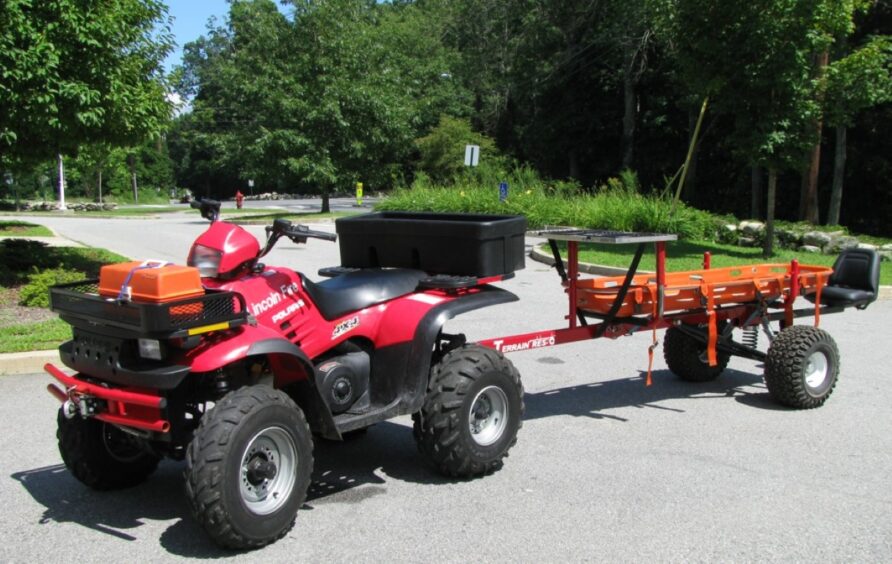
The trailer folds for easy transport, so could be optimised for CDS compatibility.

Although not strictly a trailer, LV-TEH in Latvia (as above) also makes a folding rack that can be used to secure a casualty, although not sure how well!
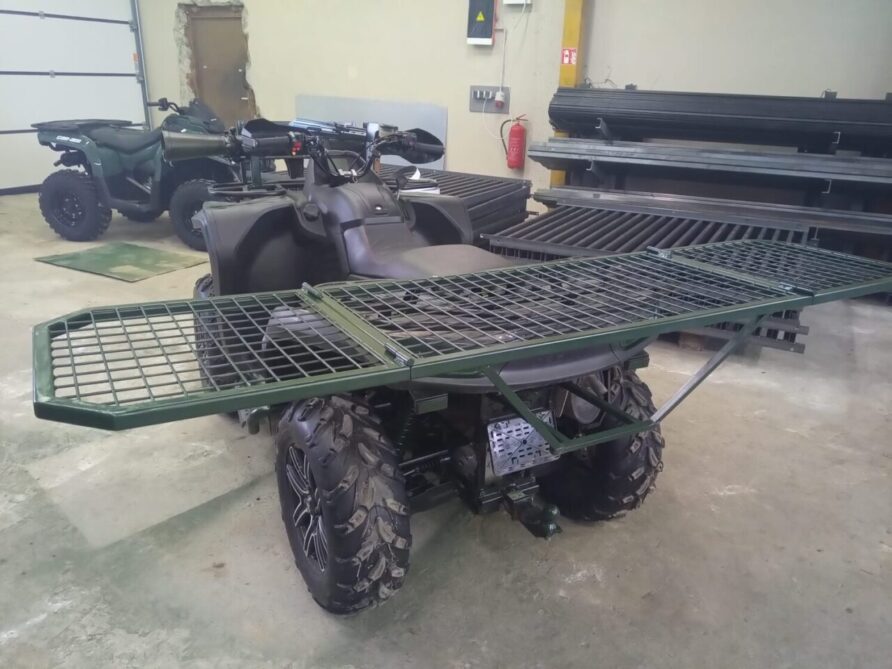
Pallets and Pallet Trailers
Traditional pallets tend to be less of a concern for air despatch, they are unlikely to be handled as a unit load when on the ground, with CDS packages always weight and space optimised by the riggers.
Most standard pallets are also dimensionally incompatible or inefficient with the CDS dimensional constraints, especially the need to leave space for securing straps to the skid board. NATO or Euro pallets, at 1.2m, just don’t fit.
1mx1m pallets are available and fit quite well with a CDS skid board, but less commonly available. 1.1×1.1m plastic pallets are also available, so if pallets were required, these less standard sizes would be used.
But unless the force on the ground has some means of handling the pallet as a pallet, they are just dead weight.
When British Army airborne forces were better resourced and could airdrop larger vehicles like the Supacat ATMP, it was able to move ammunition pallets (especially those for the 105 mm Light Gun) off a landing site using dedicated pallet trailers.
To increase carrying capacity and flexibility, a pair of specially developed trailers were also introduced…
- FLPT (Fork Lift Pallet Trailer)
- SLLPT (Self-Loading Lightweight Pallet Trailer).
Although there are many variations, the basic trailer had a hydraulic tipping mechanism and pallet forks.
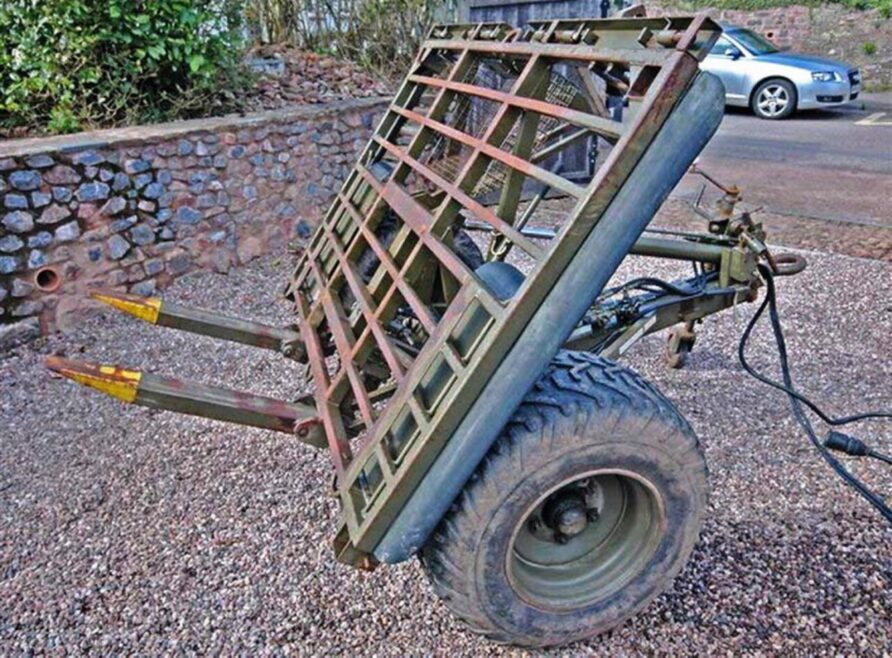
The driver would simply tilt the trailer into the down position, reverse onto the pallet, tilt the trailer back up, and drive away.
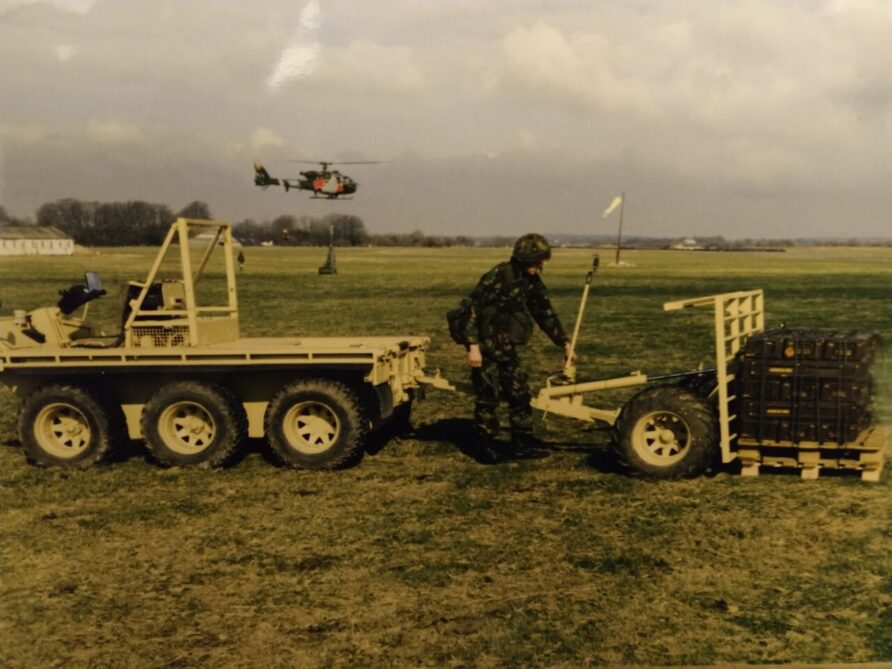
The maximum payload for the ‘flipit’ trailer was 1,400kg, and it could also be converted to carry three stretchers.
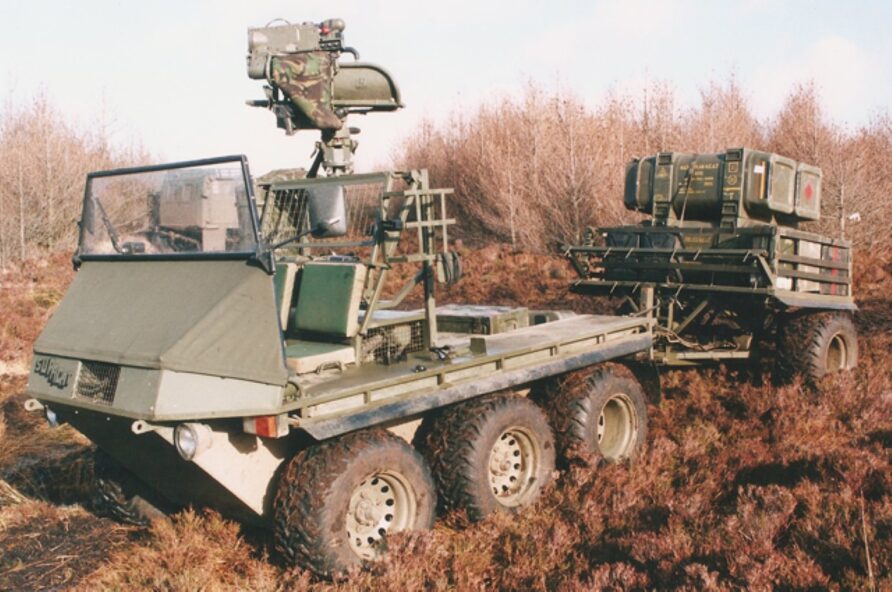
Demountable corner posts could also be used to form sides for loose loads, with ratchet straps used to secure the load.
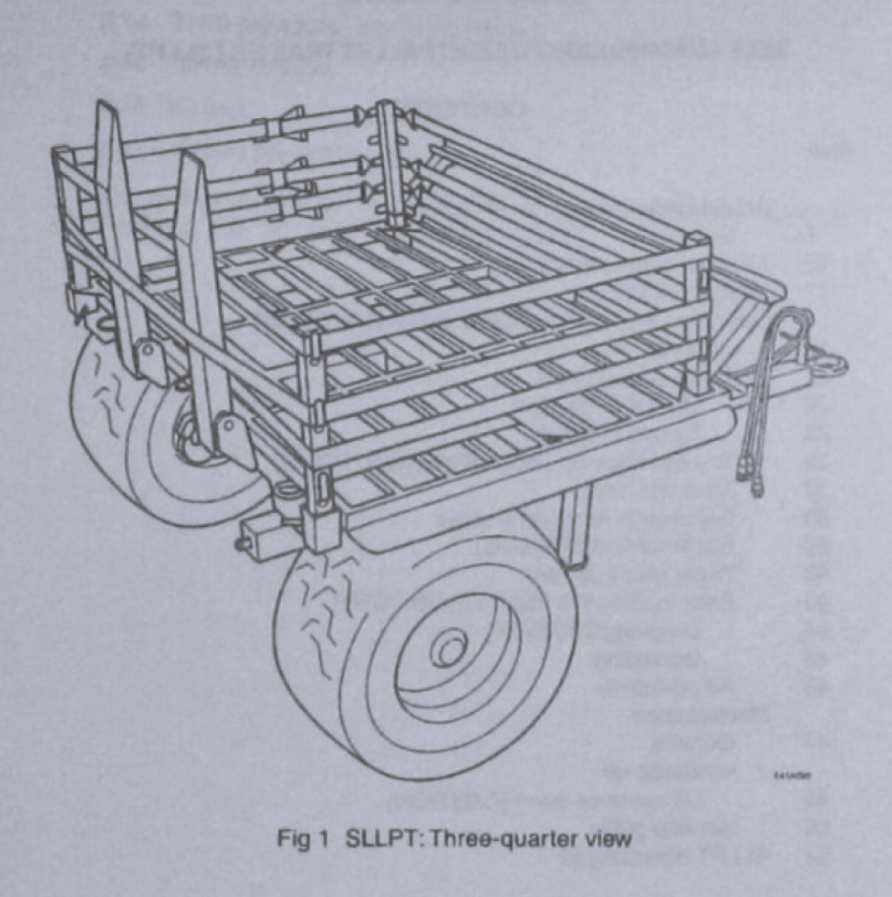
A 910 Litre Water Carriage Pack (WCP) was also available.
The conversion took only a few minutes and the posts were carried on the trailer.
I don’t want this post to be a nostalgic pity party, we have to work within today’s reality, and those pallet trailers would be too wide in any case, and no one makes them either.
A similar concept is found in the fruit industry, the orchard bin and the roller trailer.
They use standard-sized wooden or plastic pallet bins and load them onto the trailer by reversing, once secured the vehicle drives away.
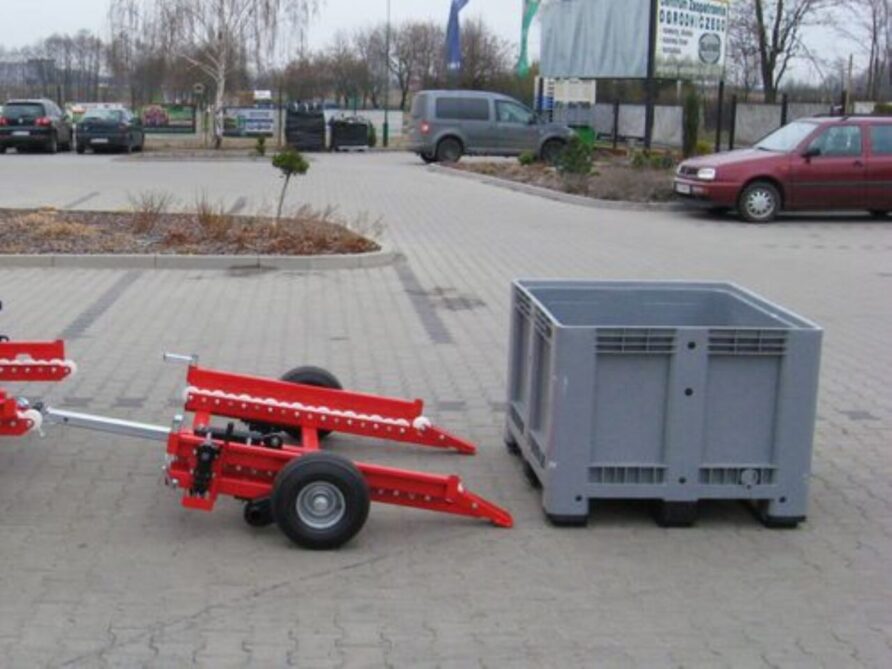
Other variations use chain drivers and rollers, or tilting load beds, but the overall concept is the same.
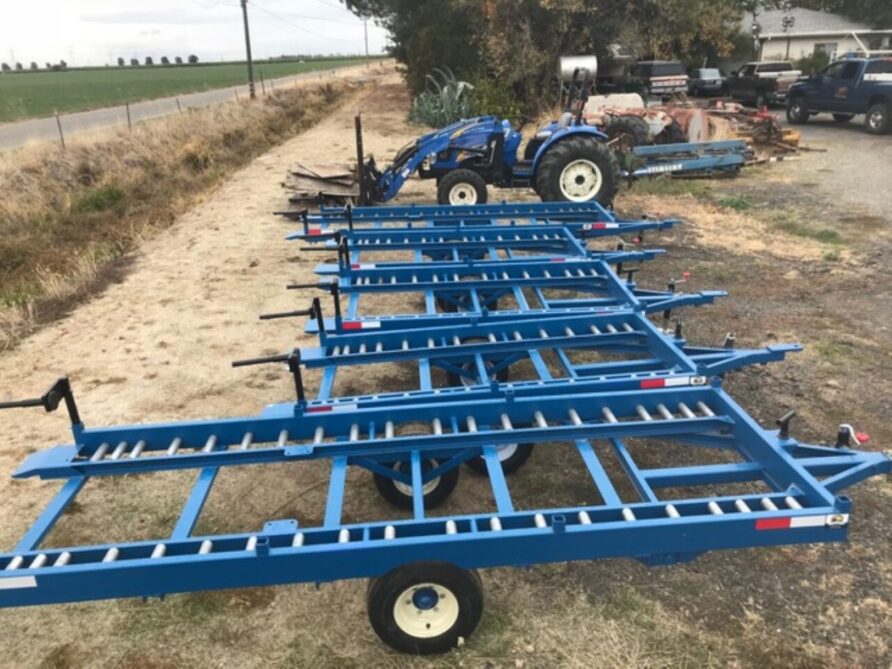
None of the solutions above would be ready to go now, each would need to be re-engineered to fit the specific CDS constraints.
It would also be possible to approach this from a single-pallet or double-pallet perspective.
Pallet boxes 1m wide and 2.16m long would fit perfectly inside the double CDS footprint.
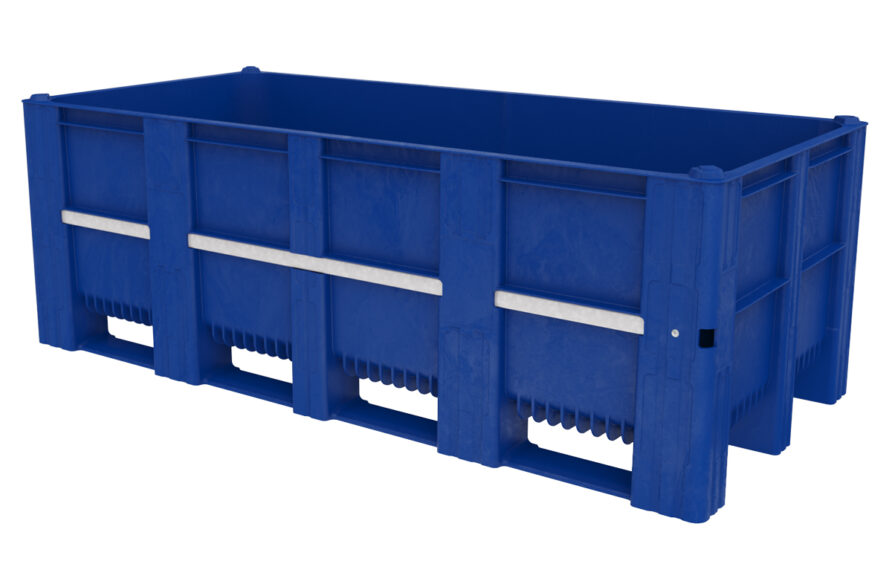
They are available with lids, drain plugs, dividers and in various colours (thankfully).
The pallet box could simply be attached to a flatbed or roller trailer and used as a conventional trailer, or they could be demounted like a small version of a DROP/EPLS flat rack.
Although every item of stores or equipment inside the pallet box could be carried by hand, specific unit loads could be defined, packing schemes developed, and subdividers and energy-absorbing materials CNC cut.
For example, a mortar platoon could have all their equipment and an initial allocation of mortar bombs pre-packed inside the container, ready to be cleared in one go from the landing site.
I also looked at using Joint Modular Intermodal Containers (JMIC) for this, but they are too wide.
